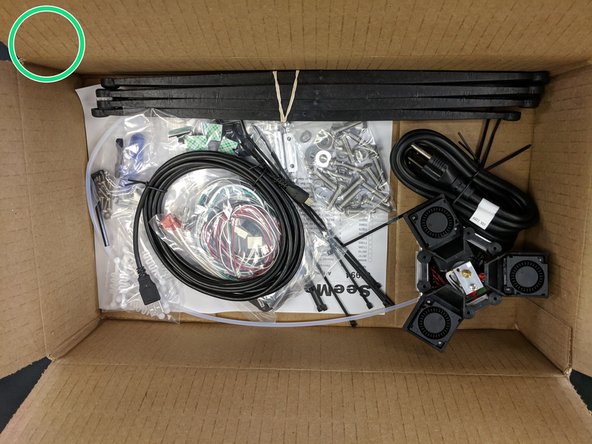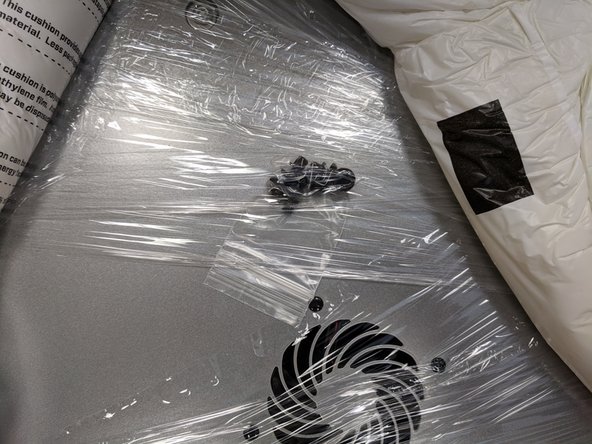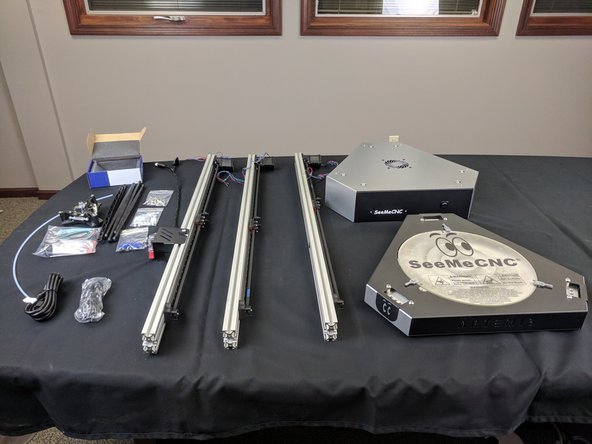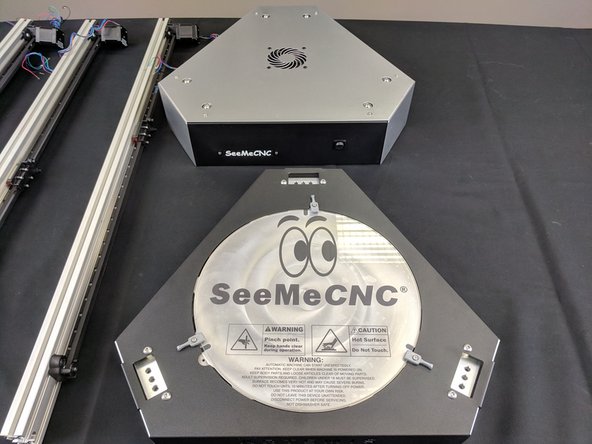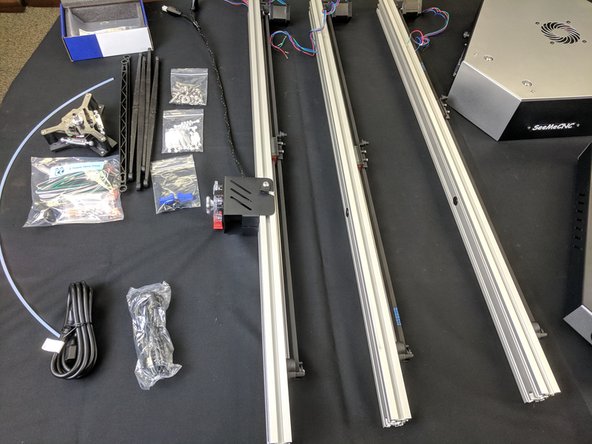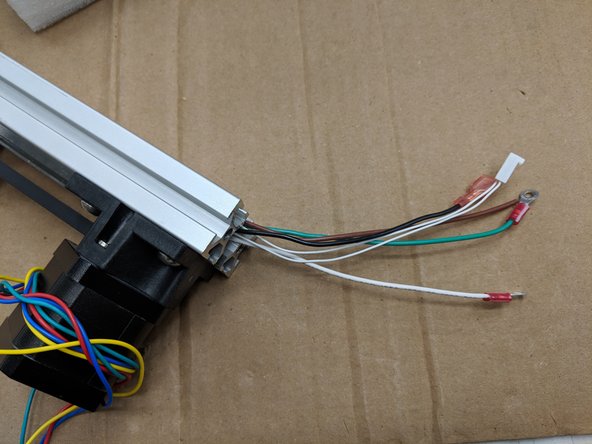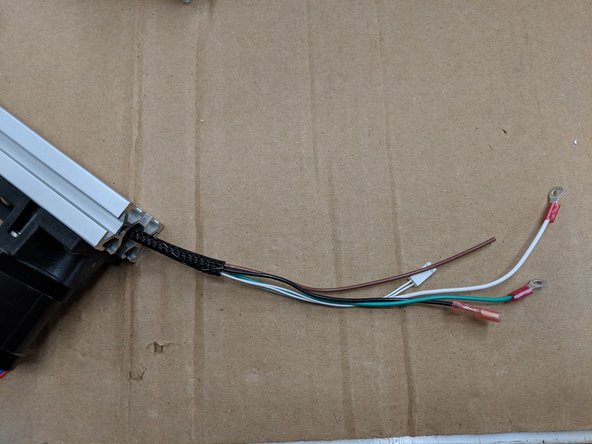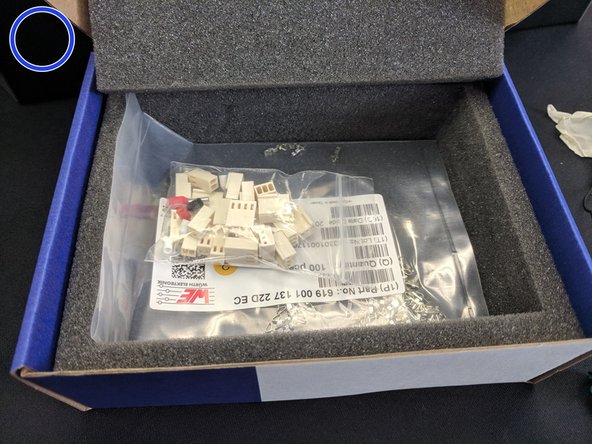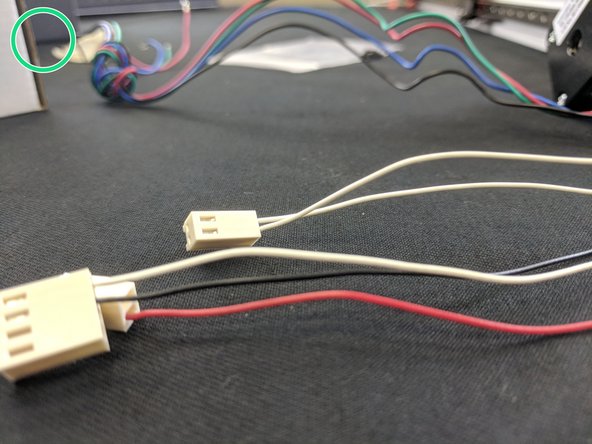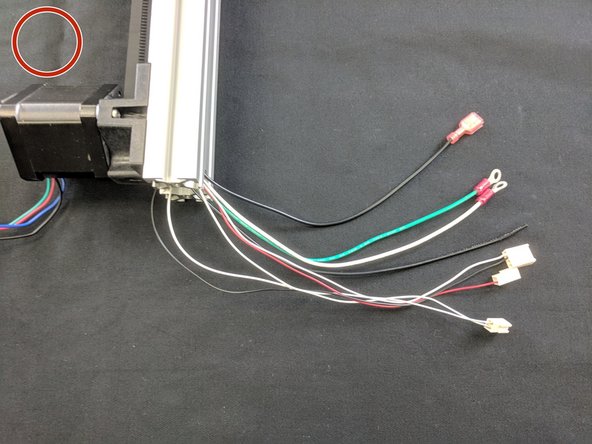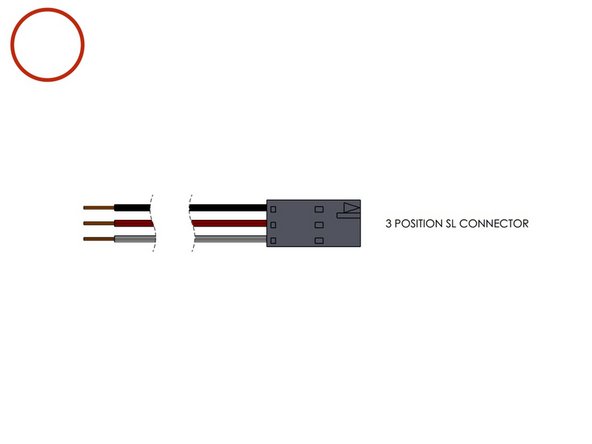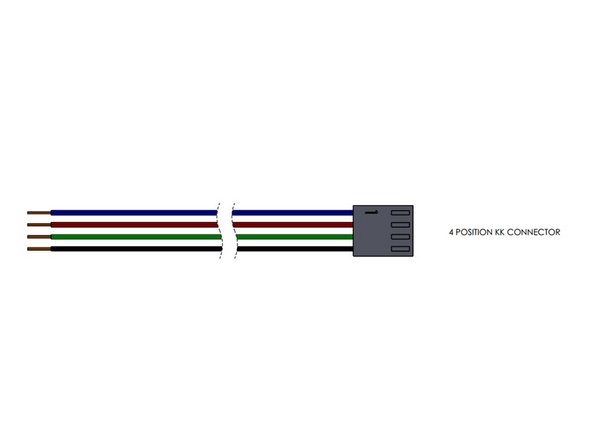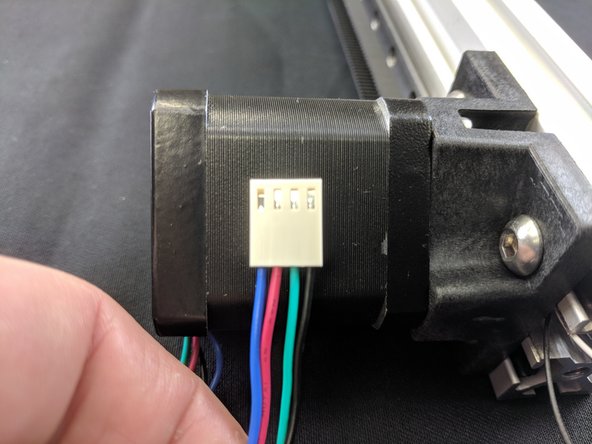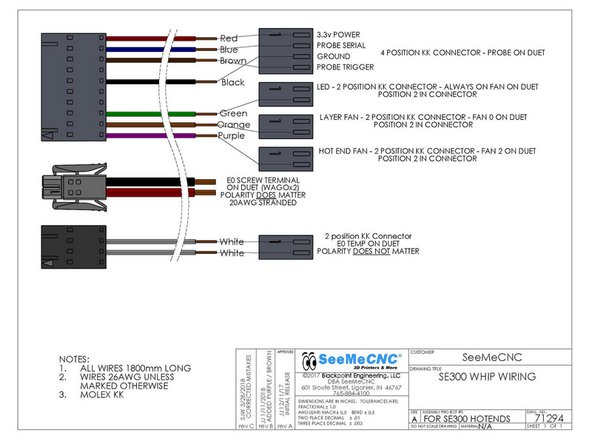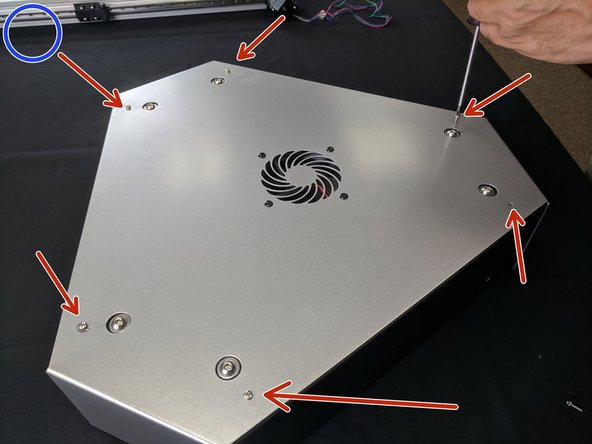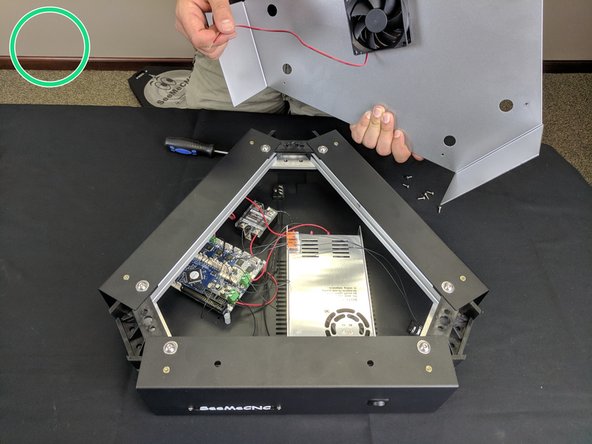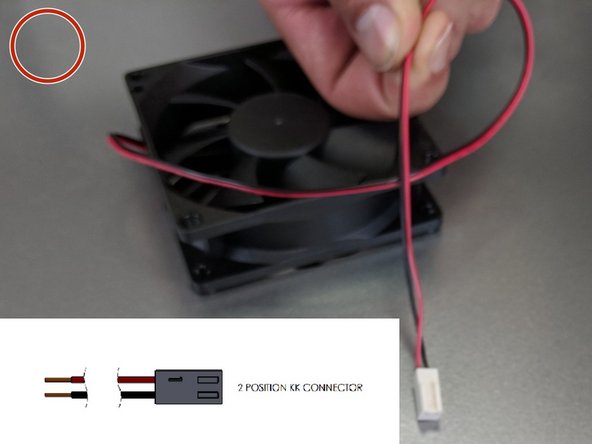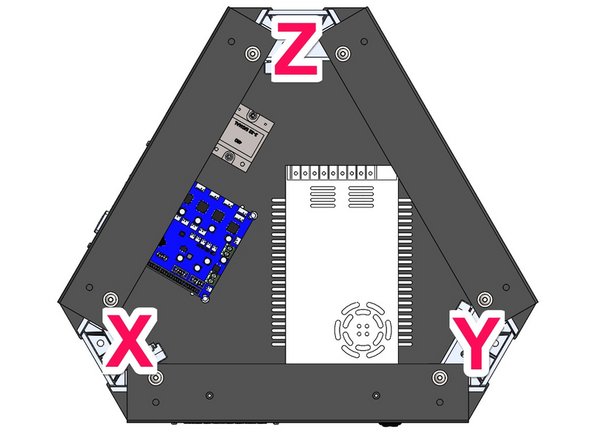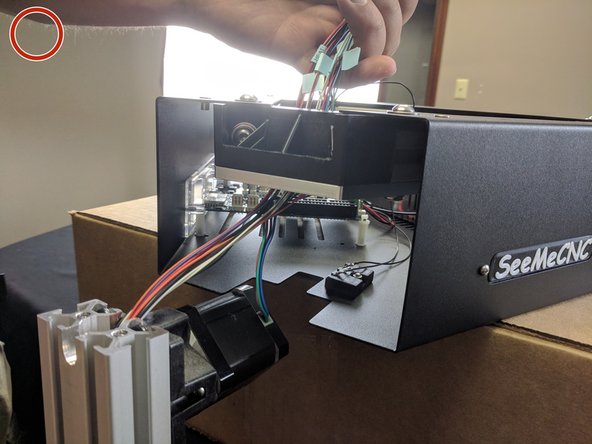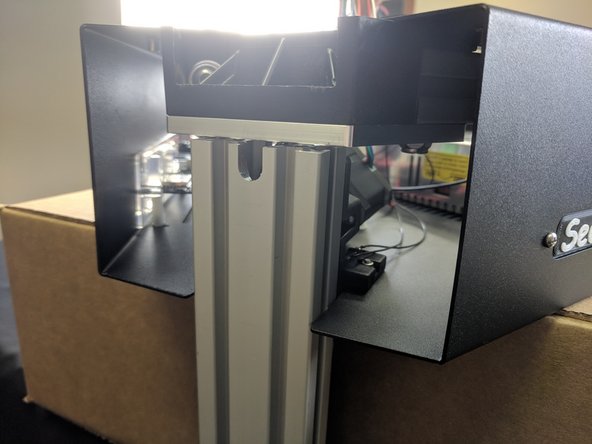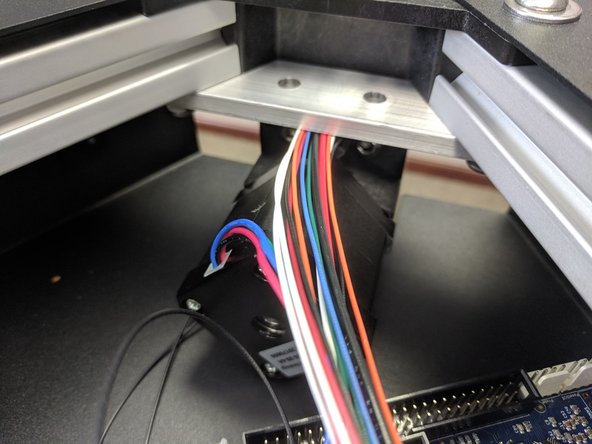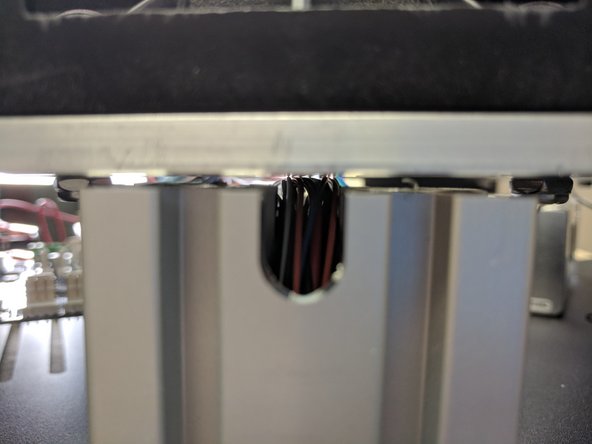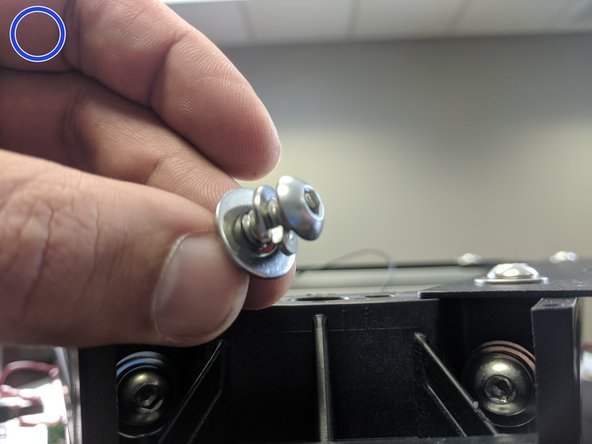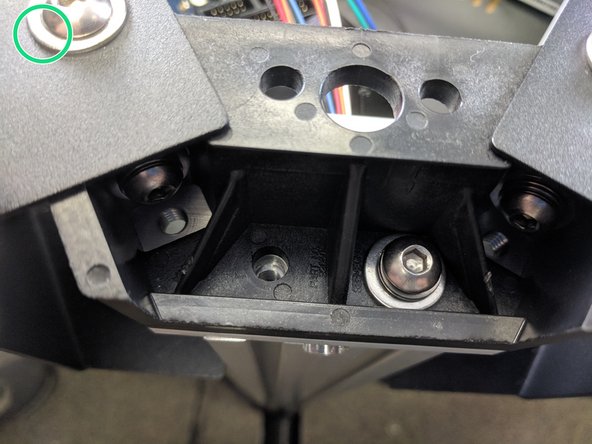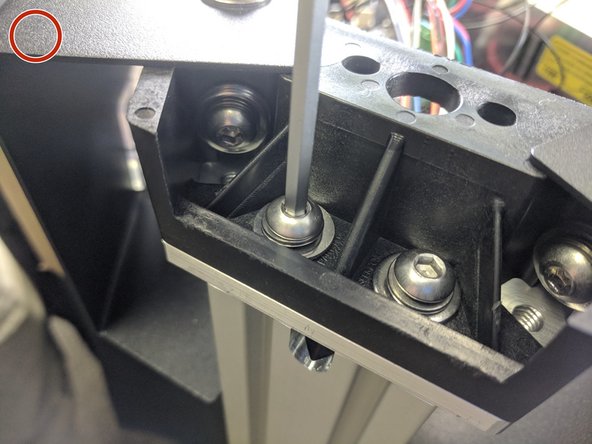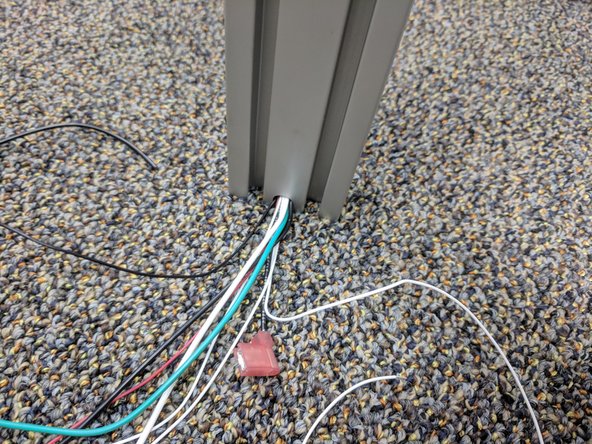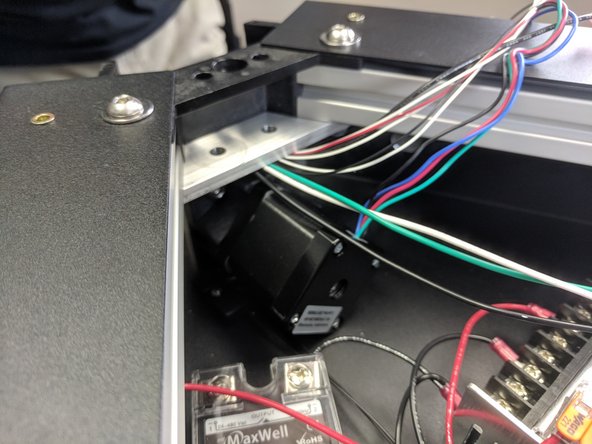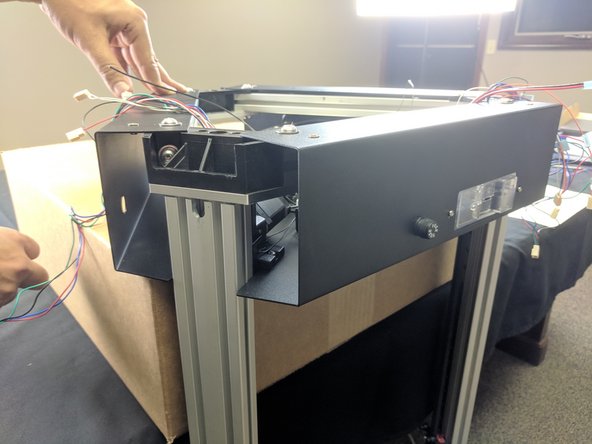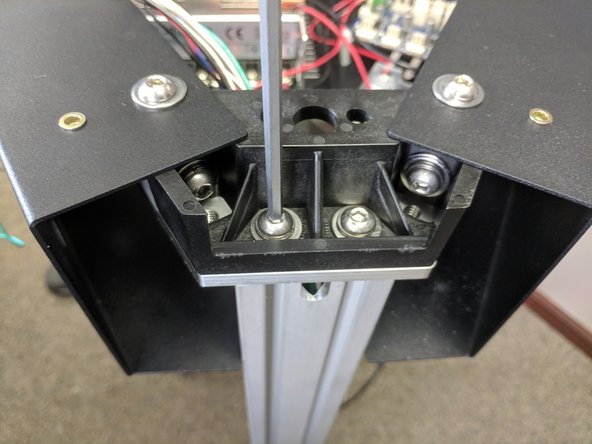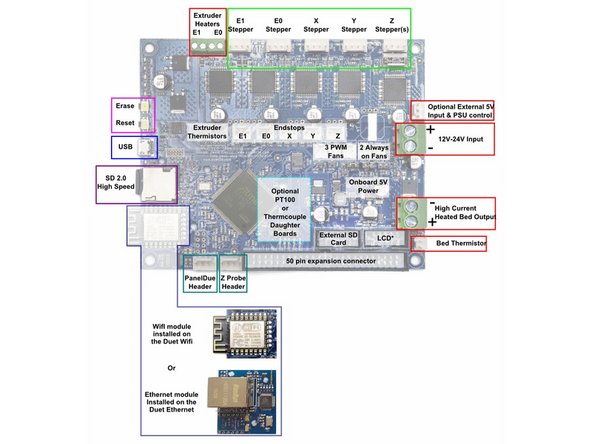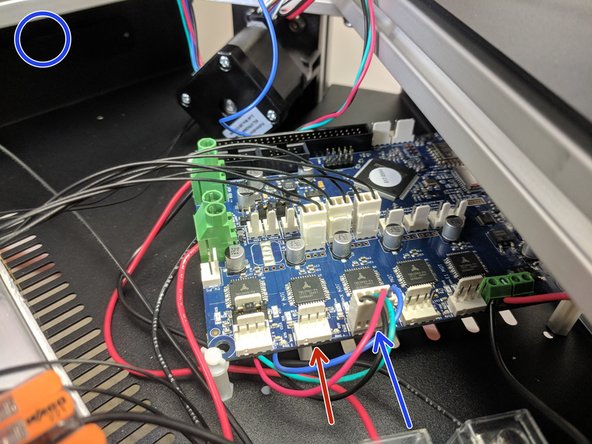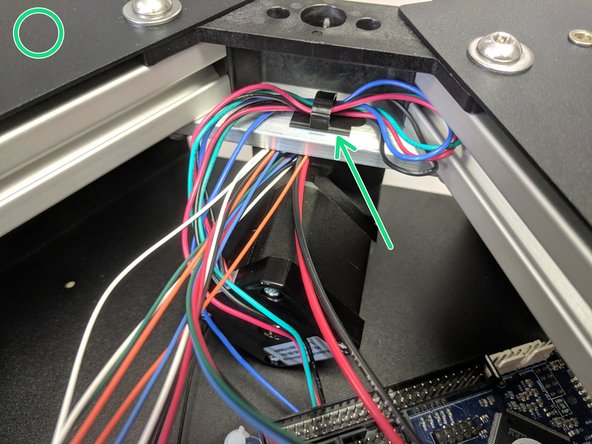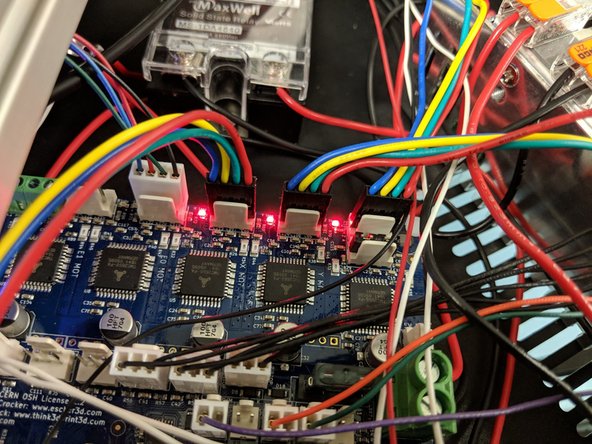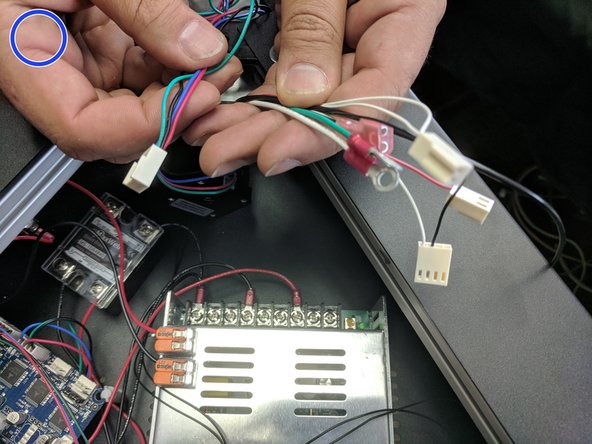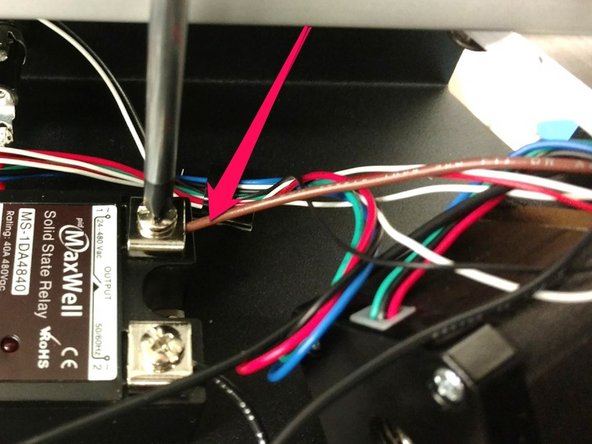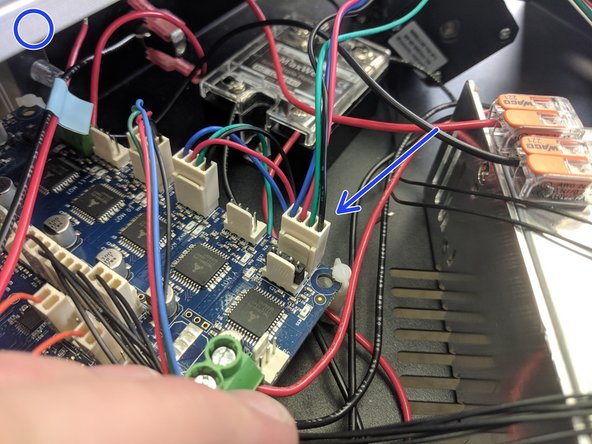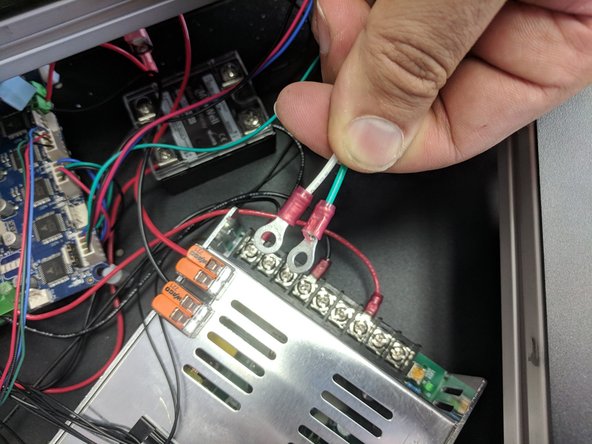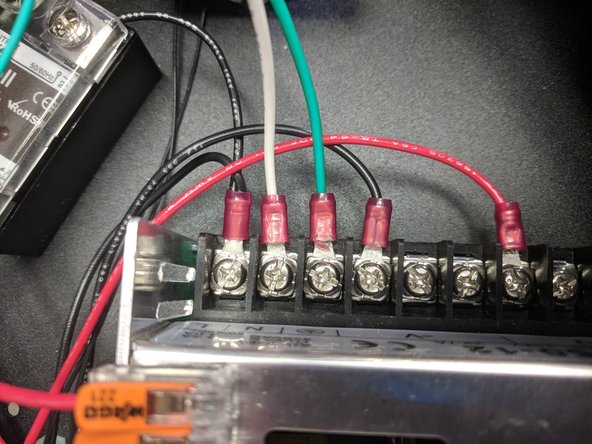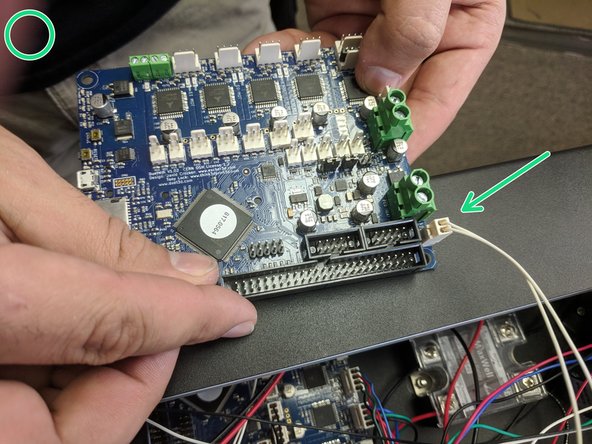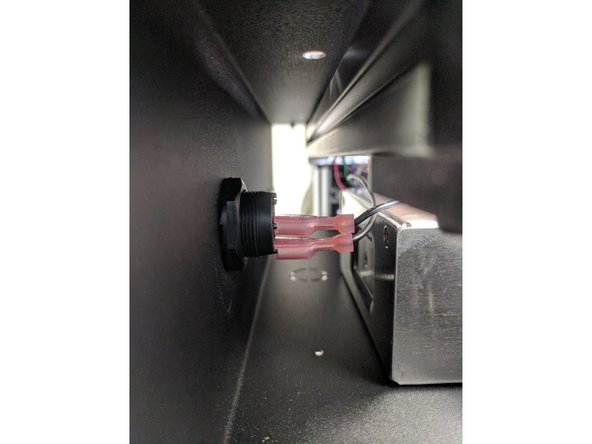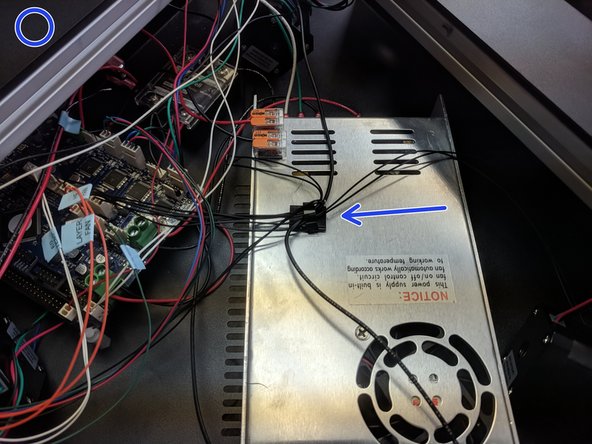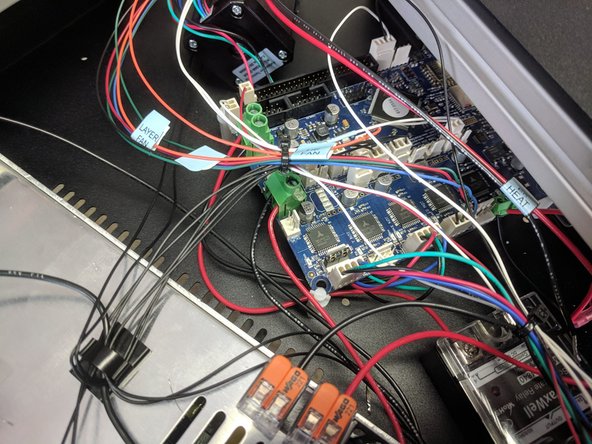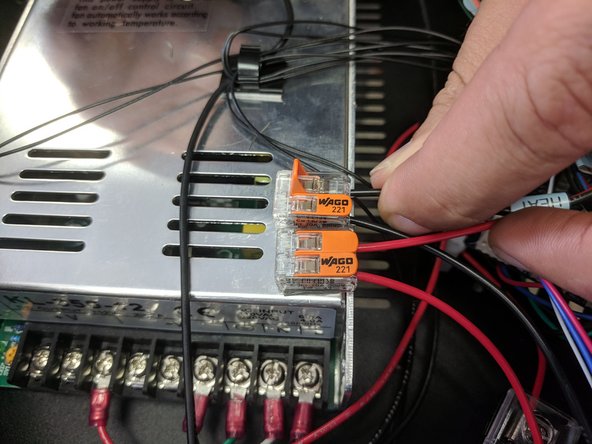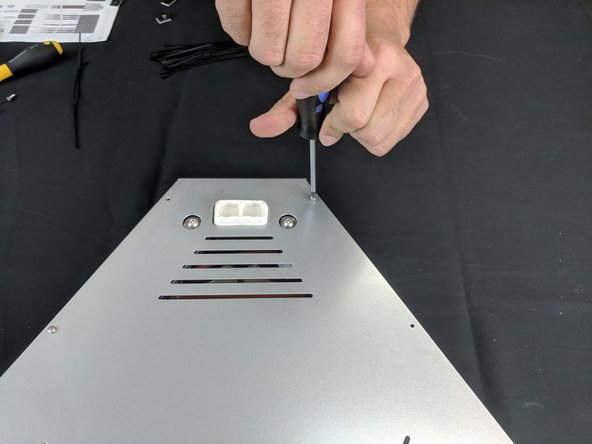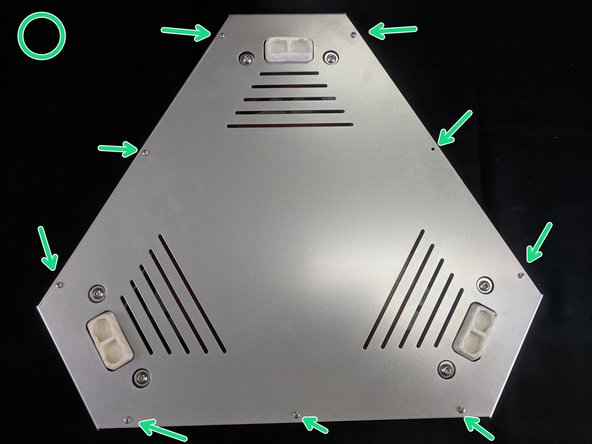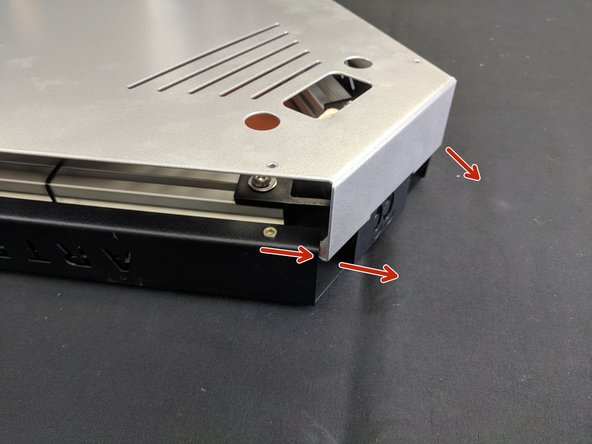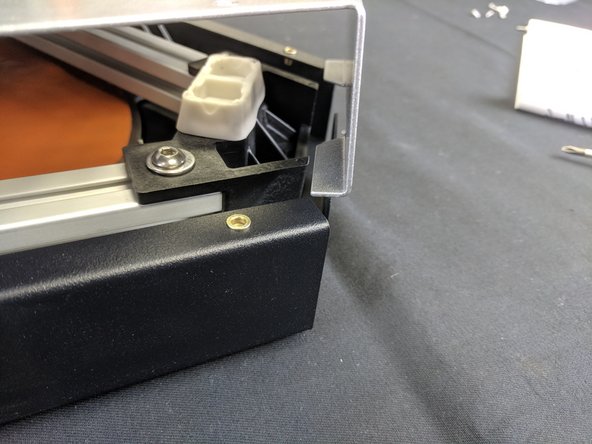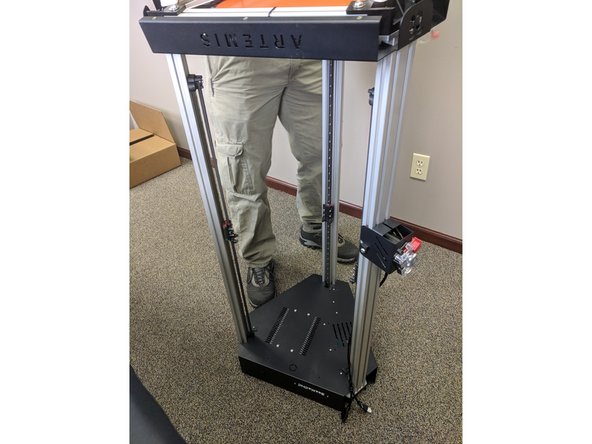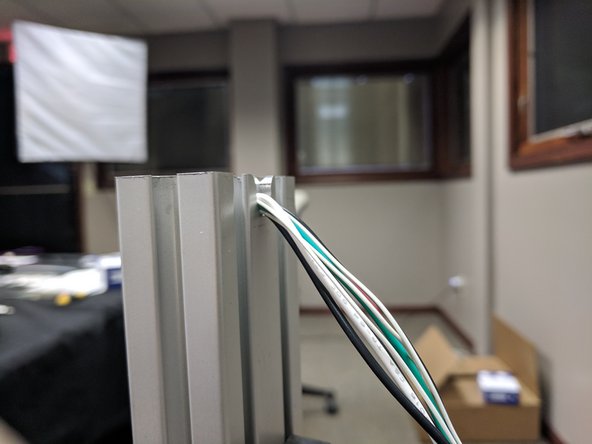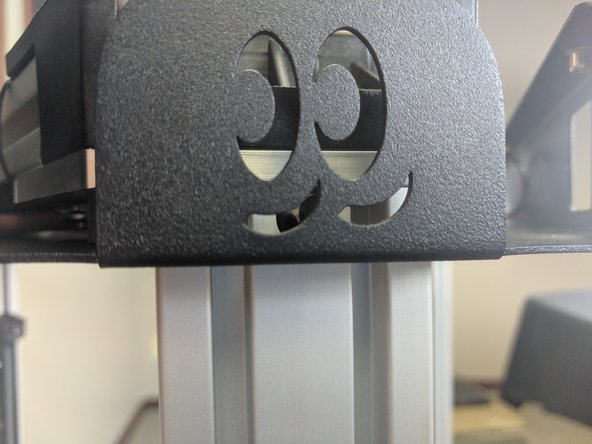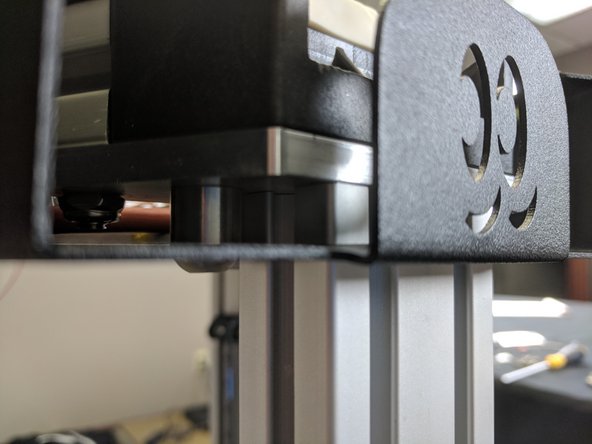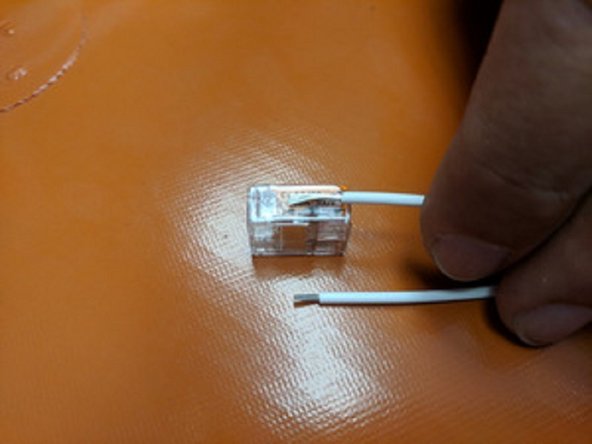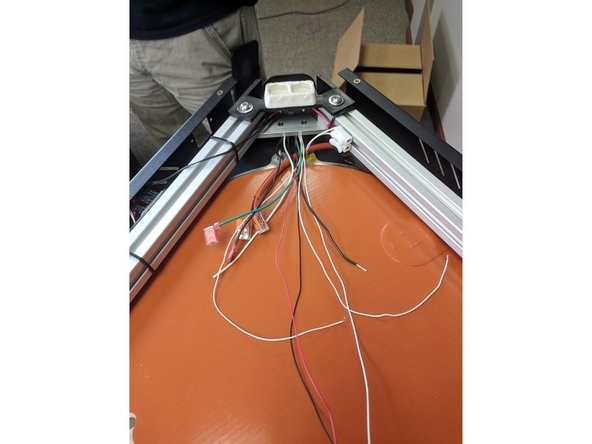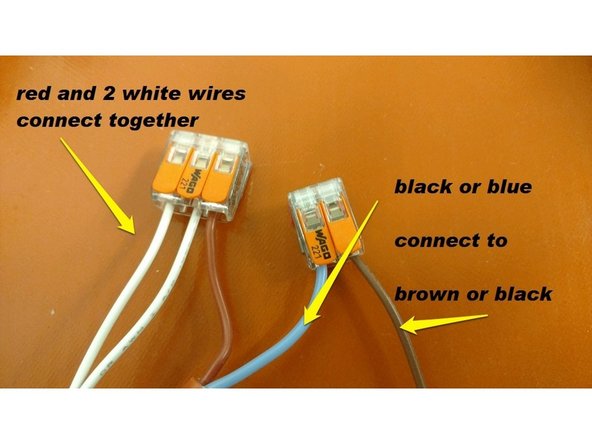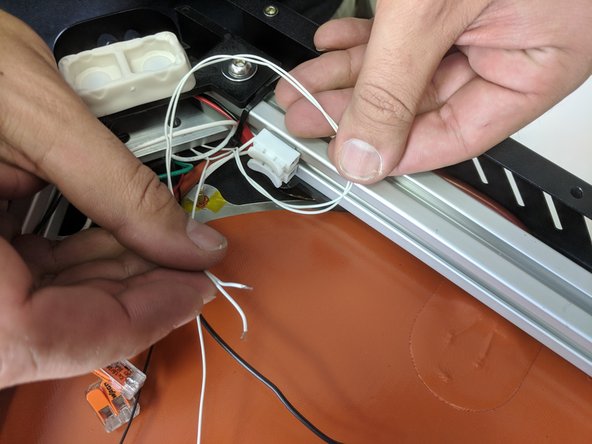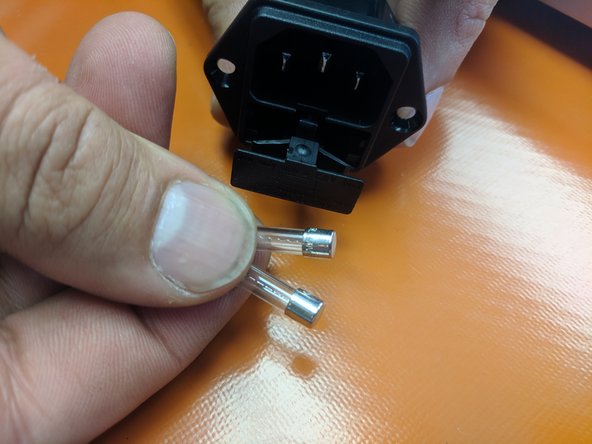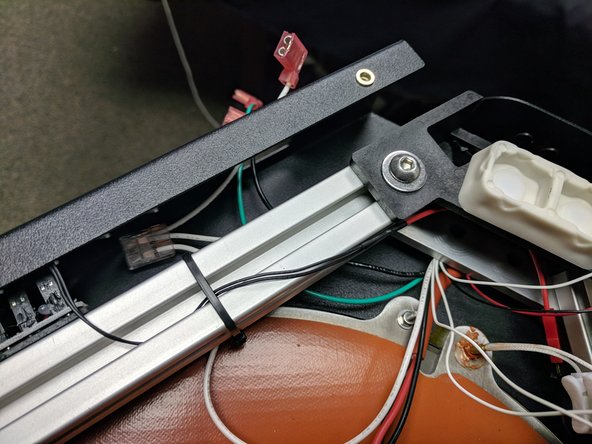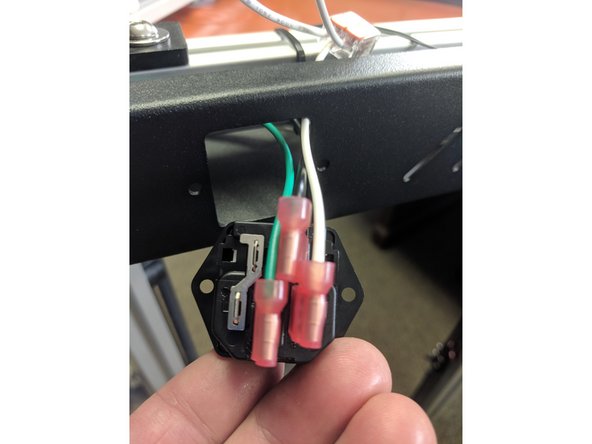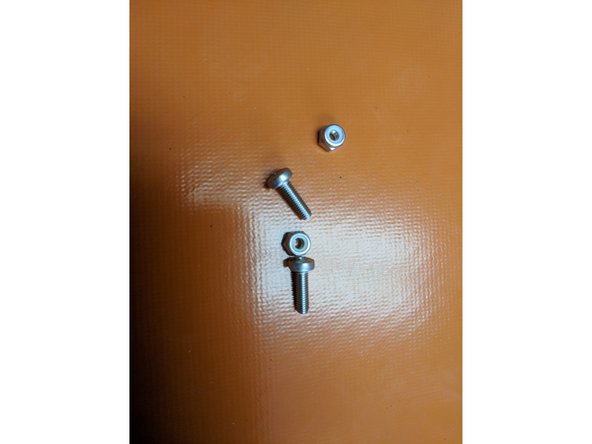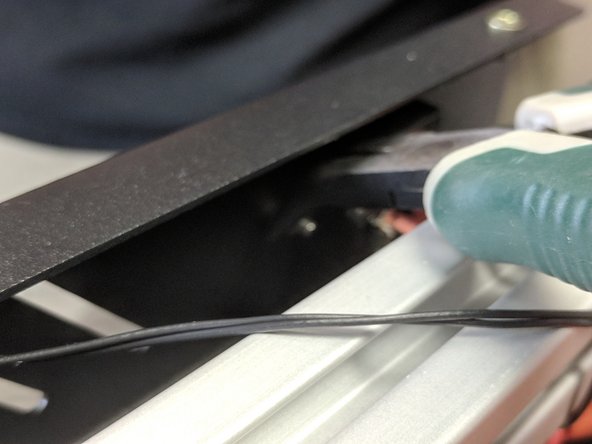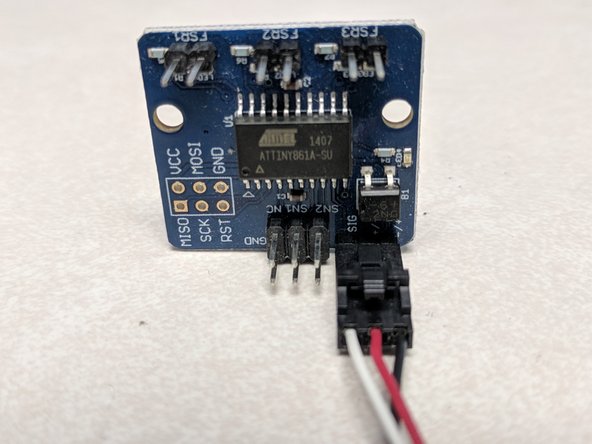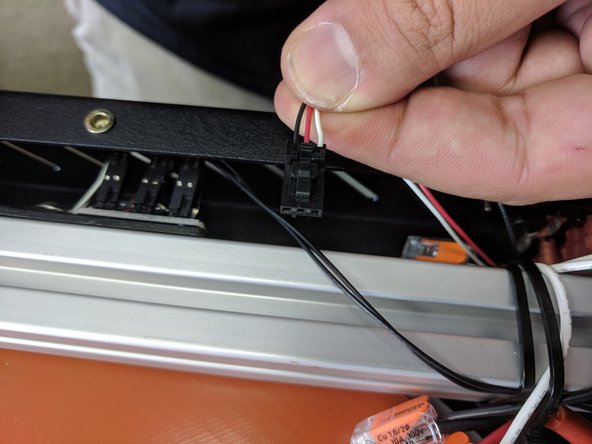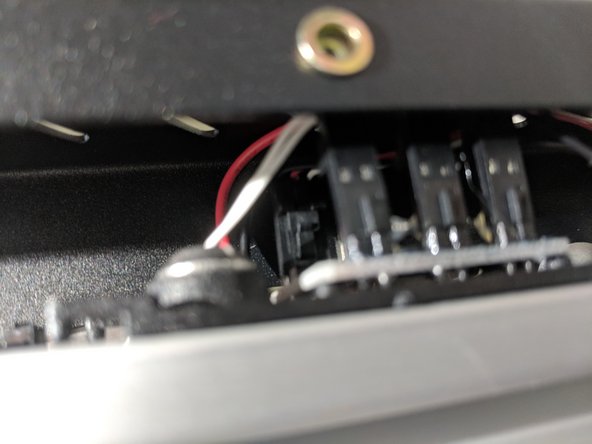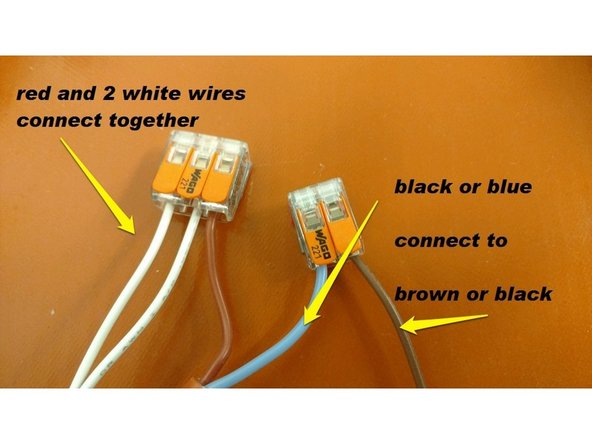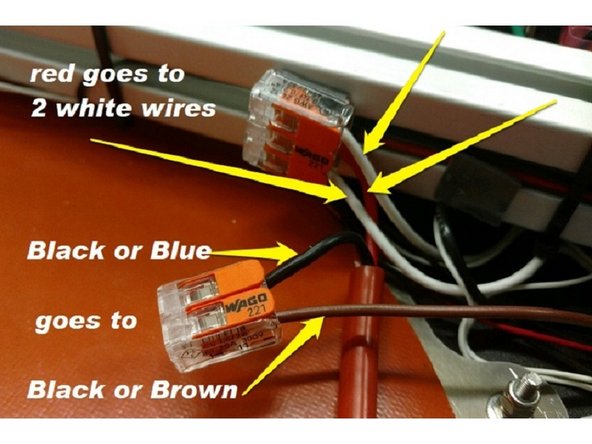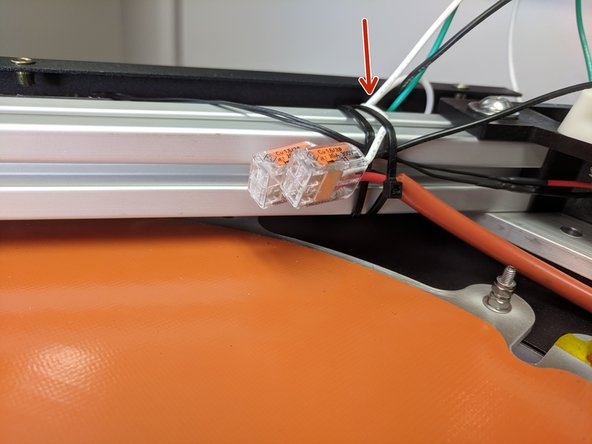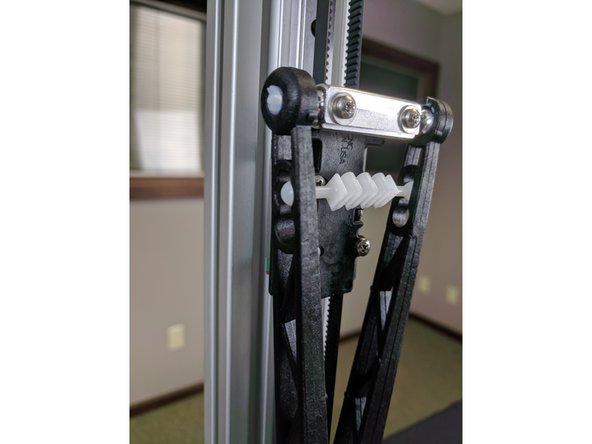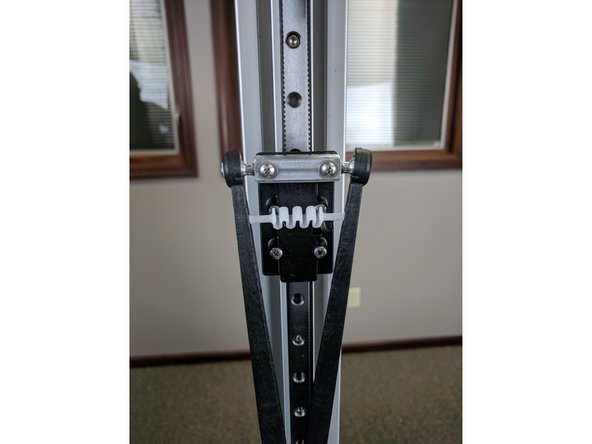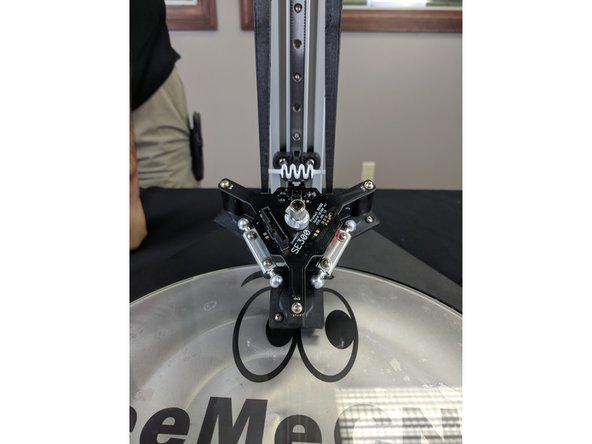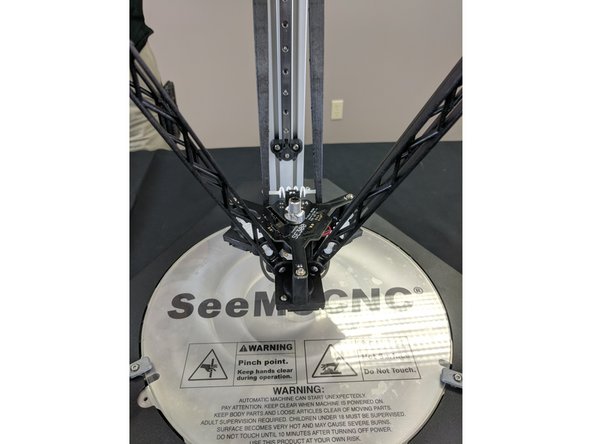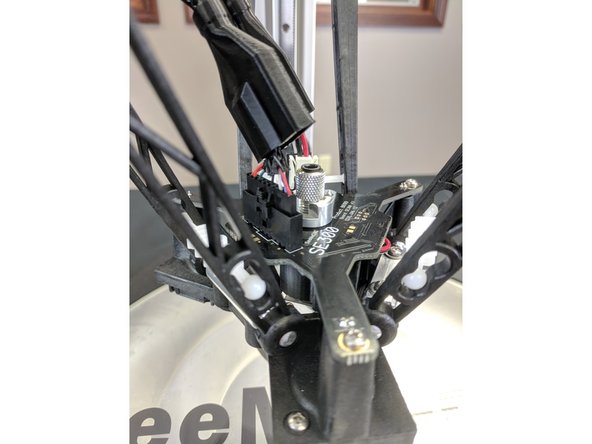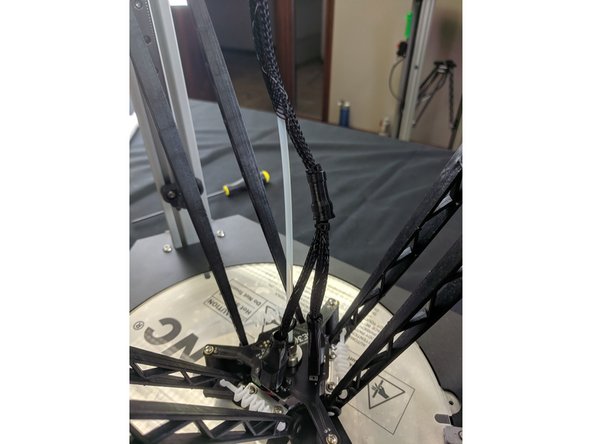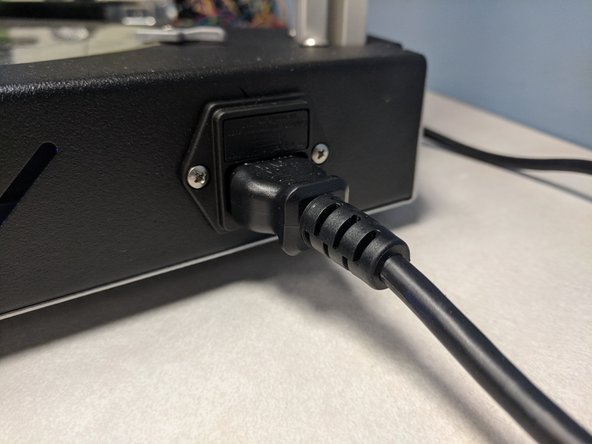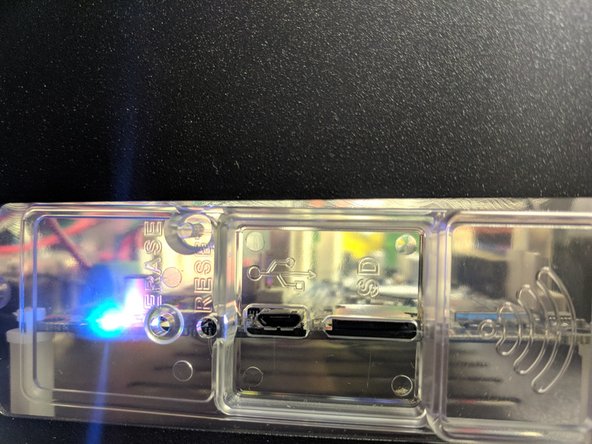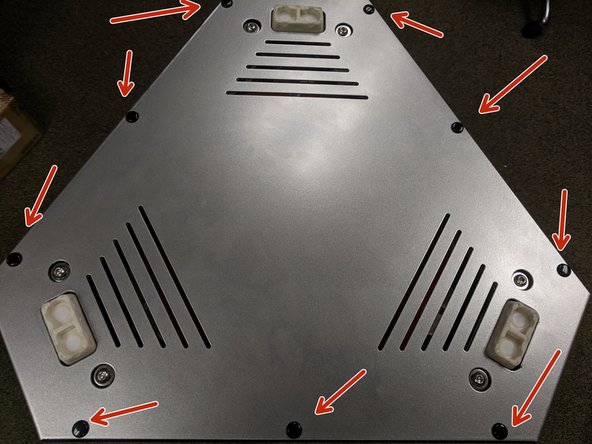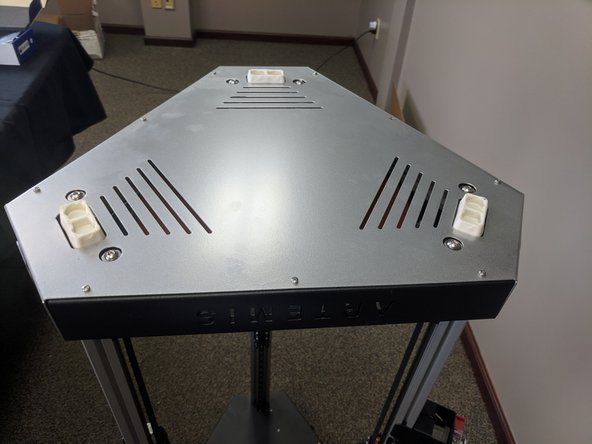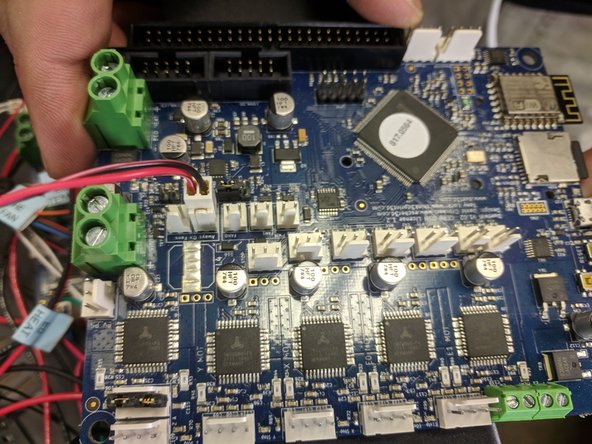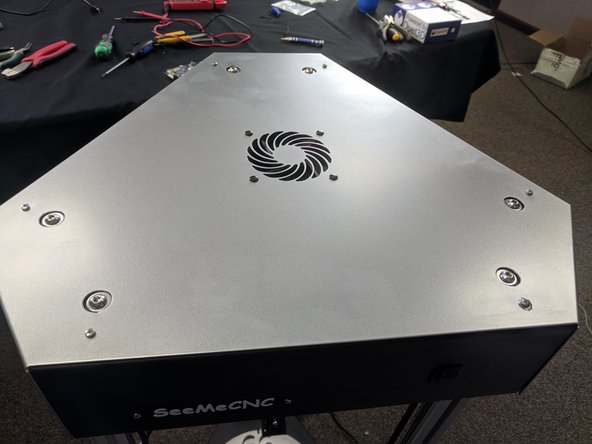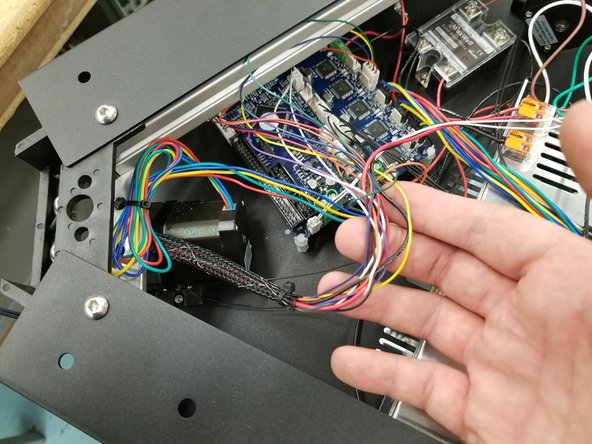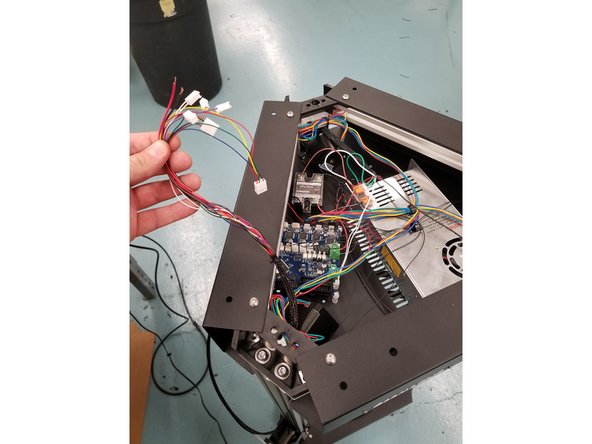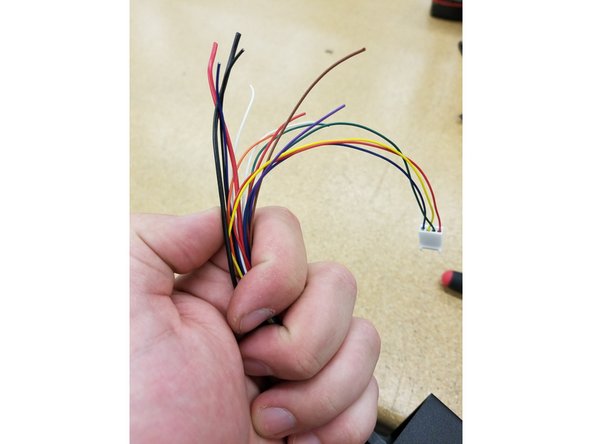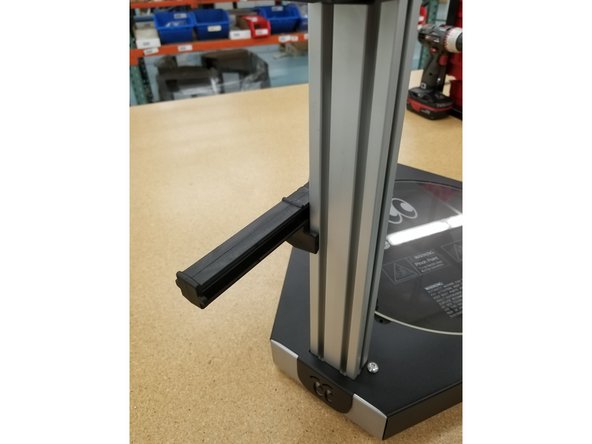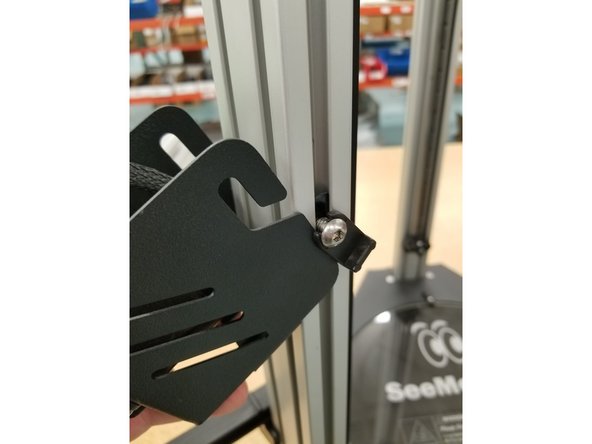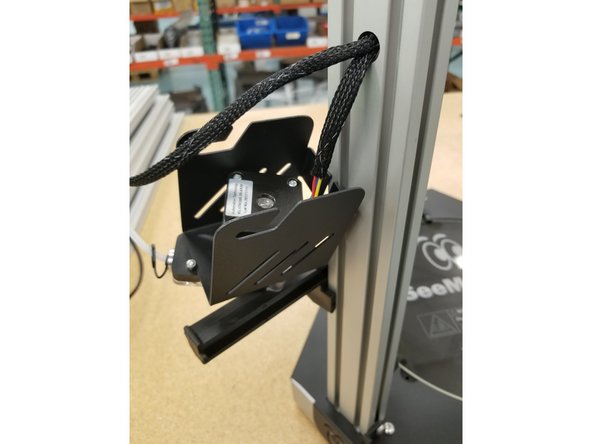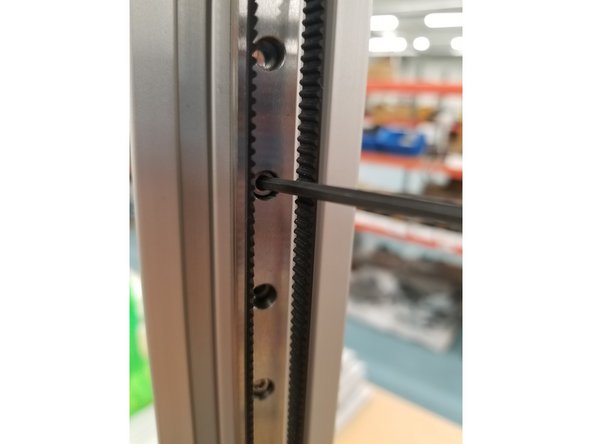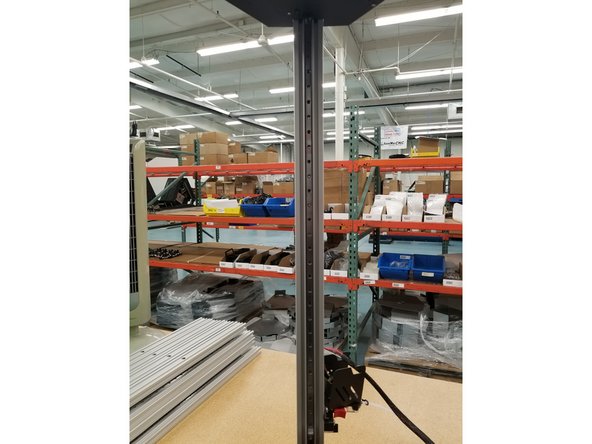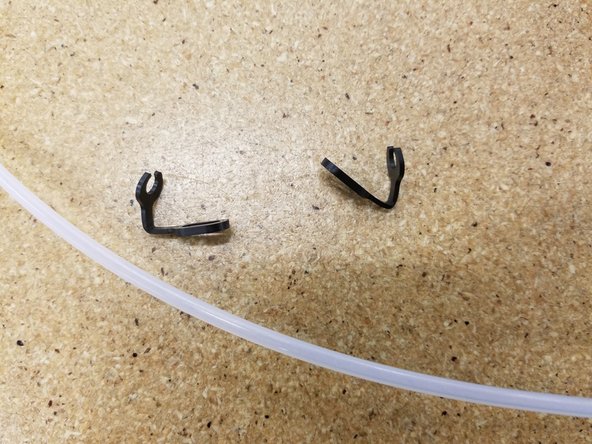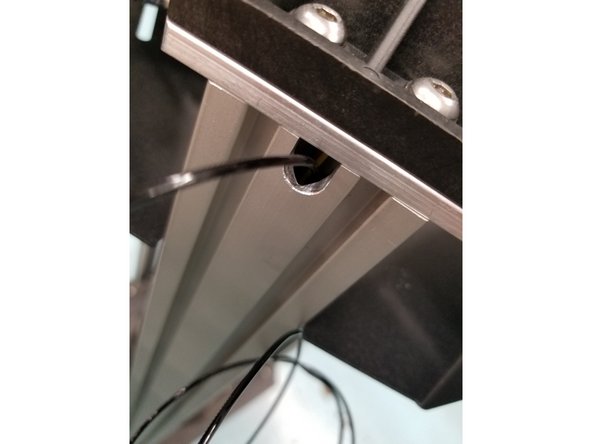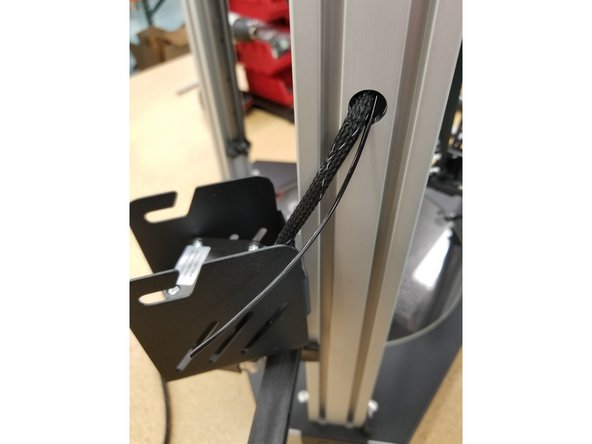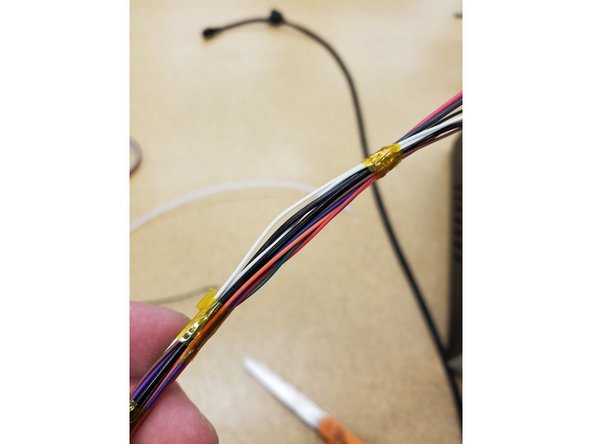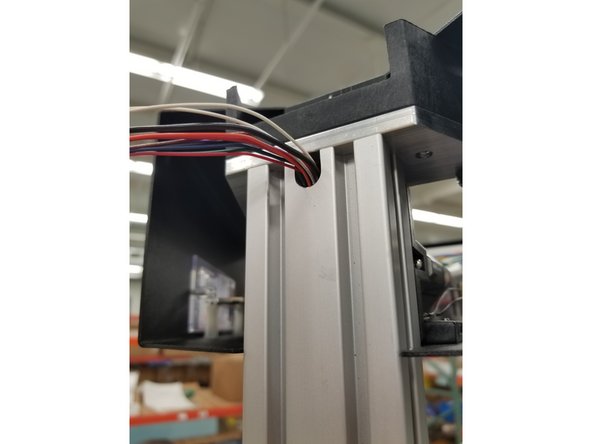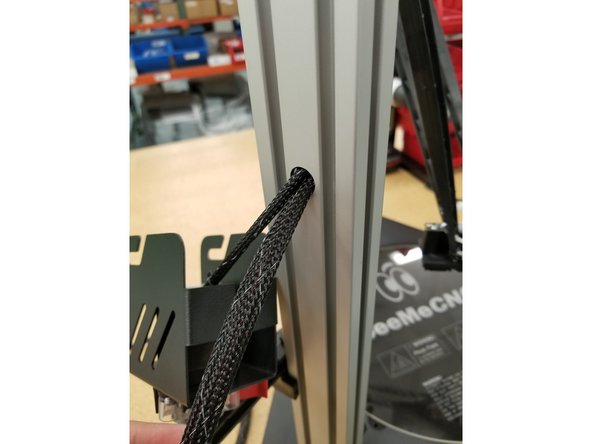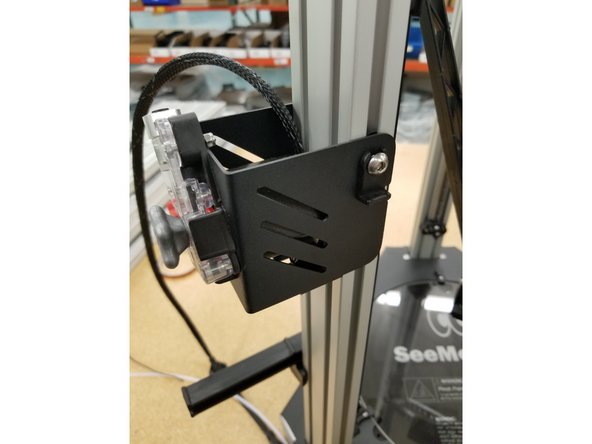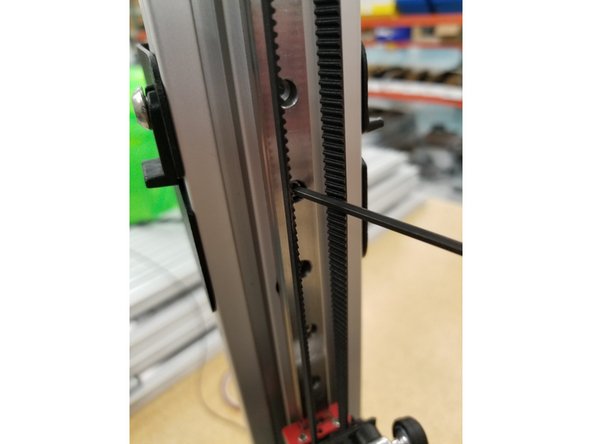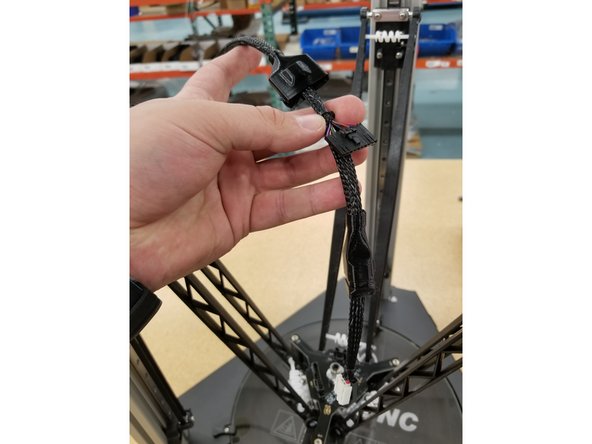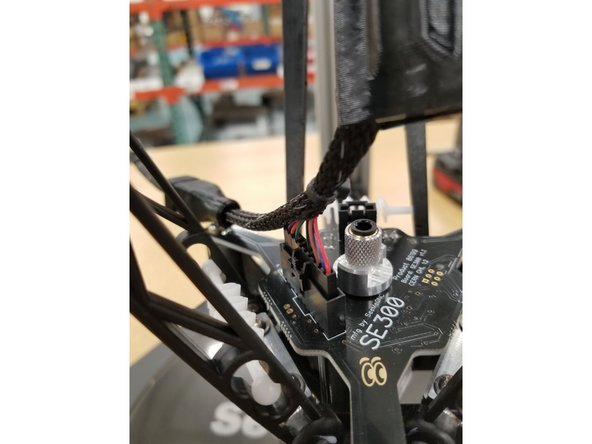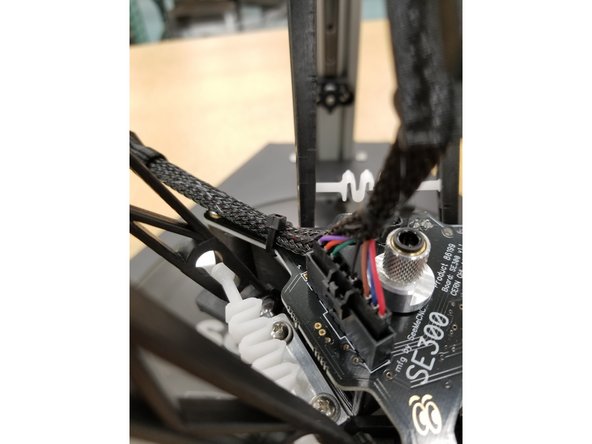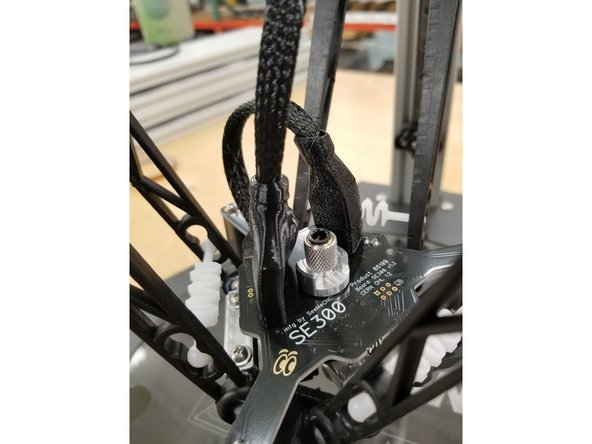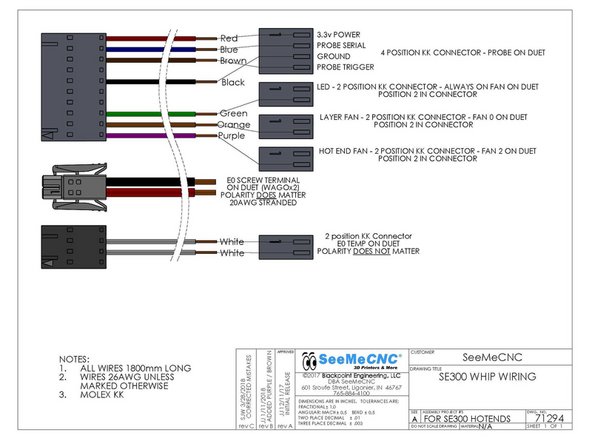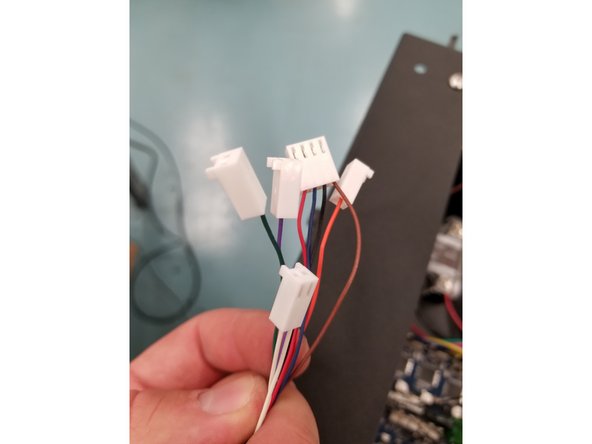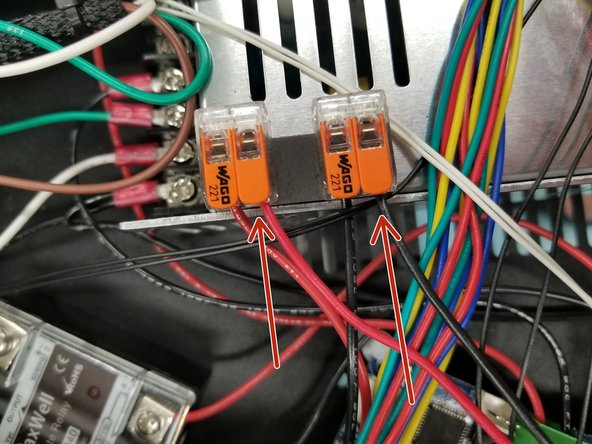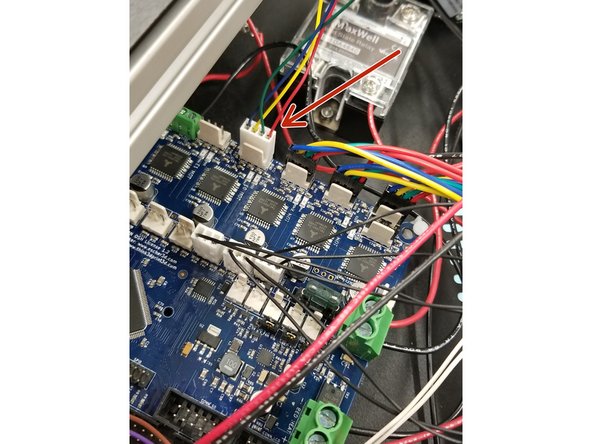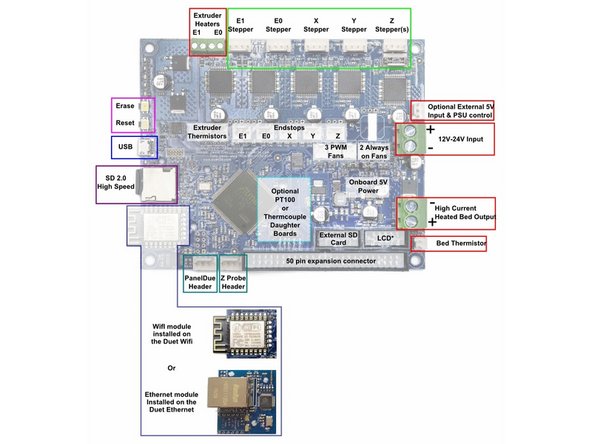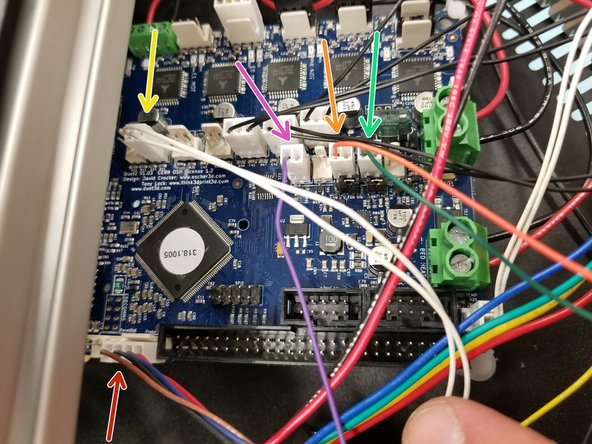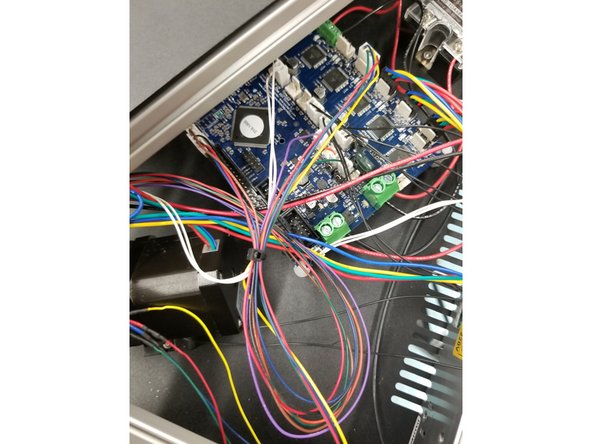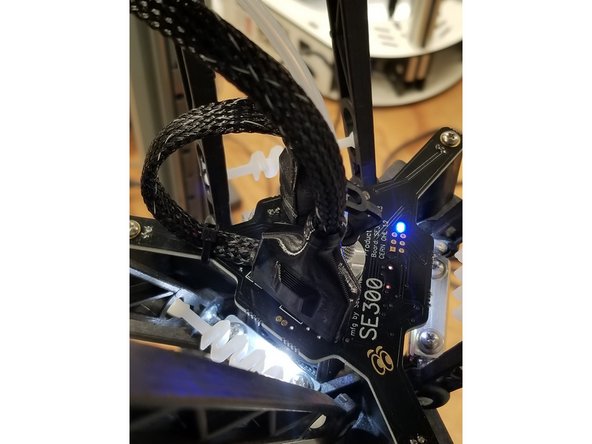Introduction
How to properly remove and replace the SE300 whip with the newer revision (7-10-2018) whip. This guide is written specifically for the Artemis 300.
-
-
First, click here to read safety information . This safety information may be updated at anytime so occasionally check for updates.
-
NOTE: This guide is intended to be followed online in order to fully utilize the links and documentation found within.
-
-
-
Inside the large box that the Artemis 300 comes in, are the rails, and two medium sized boxes. Carefully remove the rails and set them aside.
-
Remove the two medium sized boxes and CAREFULLY cut the packing tape.
-
The pictures in this step show the base assembly. There is yet another box within this box. This smaller box has all the accessories and parts for assembly.
-
You can carefully remove the shrink wrap from the base assembly. NOTE: There is a small package of press in rivets shrink wrapped to the base assembly. DO NOT LOSE THESE!
-
-
-
The smaller box in the base assembly pack is the accessory / assembly contents.
-
-
-
The other medium box is the upper assembly.
-
You can carefully remove the shrink wrap from the upper assembly. NOTE: There is a small package of press in rivets shrink wrapped to the top assembly. DO NOT LOSE THESE!
-
One final item in this box is the DUET box. This box contains connectors and crimps. Do not discard this box!
-
-
-
These are the parts that make up the Artemis 300.
-
-
-
There are 3 towers for the Artemis. 1 of the towers has the extruder and hot end whip pre-installed. For this step you can choose either of the remaining 2 towers to be the Z tower.
-
Locate the Z Tower Wire pack. Remove the wires from the pack and straighten them out. Be careful not to lose any of the connectors from the pack.
-
The connectors shown will be in the top of the machine (the side with the stepper motors).
-
Please orient so that you have the wires in the orientation shown.
-
-
-
The first set of wires to feed in the Z Tower are the 18awg wires. These are the thicker wires from the Z Tower Wire Pack. Please ensure to have them oriented the correct way.
-
You will feed from the bottom of the tower (opposite the stepper motor). Feed the following: 18awg white and green wire with ring terminal, 18awg black wire with straight spade terminal, 18awg wire with NO terminal.
-
These wires can be fed by pushing small bits at a time. If you feel resistance, back the wires out about 25mm and then try pushing forward again.
-
Ensure you get the same number of wires exiting the end the end of the tower that you started feeding.
-
Now run the remaining wires. This is easiest using a piece of filament to pull wire.
-
Run the included mesh loom over the wires and secure with a zip tie. This is to secure the wires for later steps.
-
-
-
Now run the remaining wires. This is easiest using a piece of filament as a pull wire.
-
Ensure that you have the orientation of the wires as specified in the photos, or you will have to remove the wires and re-feed them in the tower.
-
Feed a piece of filament through the Z tower (tower that you just ran 18awg wires in)
-
3 inches lower you are going to tape the remaining wires (2-26awg white wires) to the pull wire.
-
Next, gently pull the Pull Wire through the tower until you see the wires exit the top. If you feel any resistance, reverse approximately 25mm and then try gently pulling again.
-
DO NOT REMOVE THE TAPE FROM THE WIRES / PULL WIRE
-
-
-
THIS IS AN INFORMATIONAL STEP FOR FUTURE PROCEDURES. NO ACTION IS NEEDED FOR THIS STEP.
-
Please watch the video.
-
Make sure that the contact locks into the connector shell. The contact has a small metal tab. The tab will pop up into the slot on the face of the connector shell, locking the contact in place.
-
-
-
THIS IS AN INFORMATIONAL STEP FOR FUTURE PROCEDURES. NO ACTION IS NEEDED FOR THIS STEP.
-
The KK connectors have a #1 molded into them for pin identification. This is very difficult to see if you are not looking for it.
-
-
-
There are two different connectors. The off-white connectors in the DUET controller box are slightly different than the KK Molex (bright white) connectors SeeMeCNC installs on the wires. If you need to replace any terminals using the DUET supplied connectors, replace the enter end of the motor or switch. The crimp terminals are NOT interchangeable.
-
IF THESE KK CONNECTORS ARE NOT WITH THE Z TOWER WIRE PACK, THEY WILL BE LOCATED IN THE DUET BOX SUPPLIED WITH YOUR PRINTER KIT.
-
Remove the masking tape from the second set of wire on the pull wire. These are 26awg white wires for the heated bed thermistor. Polarity DOES NOT matter. Insert the wires into a 2 pin KK connector. NOTE: Polarity DOES NOT MATTER!
-
When complete you will have 3 sets of wires on connectors: White and Black 26awg wires in a 4 pin KK connector, Red 26awg wire in a 2 pin KK connector, (2) White wires in a 2 pin KK connector.
-
Check the image with the red circle to confirm that your Z tower wiring looks the same.
-
-
-
At the bottom of the Z Tower, install a Molex SL Connector on the 3 probe wires (26awg White, Black, Red). These will be installed in the black 3 pin SL connector.
-
In the picture with the green circle the "Tab" on the SL connector is being highlighted. This tab is what latches in the "window" of the connector to prevent it from coming out. You must orient the wires correctly when inserting them or the wire will come out.
-
On the connector housing pin 1 is indicated with an arrow. Insert the black wire into pin 1, red wire into pin 2 (Middle), white wire into pin 3. Push each of the wires in until you feel a "click". You will see that small tab, in the window of the connector when they are fully inserted.
-
-
-
This photo also shows wires for optional FSR bed probe.
-
The Z tower bottom should now look like the image with the blue circle.
-
It is complete for the time being.
-
-
-
Current machines will have the motor connectors already installed. Newest machines will have Red, Green, Yellow, and Blue wires instead of what is shown.
-
The wires of the motion stepper motors will install into Molex KK 4 pin connectors. These wires will install into the connectors similarly to how previous wires were installed into the KK connectors.
-
PIN 1 is indicated with a "1" on the connector. It is difficult to see if you are not looking at it closely, but it is there.
-
Blue wire: Pin 1
-
Red wire: Pin 2
-
Green wire: Pin 3
-
Black wire: Pin 4
-
Perform this operation on all 3 stepper motors installed on the towers.
-
-
-
Please reference the wiring diagram in the image or click this link for the old version of wiring diagram if you have 2 orange wires: Whip Wiring.
-
LED: Green Wire - 2 pin KK connector - PIN 2
-
HE FAN: Orange Wire or Purple Wire - 2 pin KK connector - PIN 2 Wire color change is explained in Step 27.
-
LAYER FAN: Orange Wire - 2 pin KK connector - PIN 2
-
PROBE: Red PIN 1, Blue PIN 2, Black PIN 3, Brown Wire PIN 4 - 4 pin KK connector
-
E0 TEMP: 2 White Wires - 2 pin KK connector - PINS 1 & 2 (Polarity DOES NOT matter)
-
-
-
We will now begin to prepare the top of the machine to install the towers.
-
IF YOUR ARTEMIS 300 HAS SCREWS HOLDING THE TOP OR BOTTOM DO NOT USE ANY POWER TOOLS! USE ONLY A SCREWDRIVER!
-
If screws are holding the top on, carefully remove them with a screwdriver. Alternately your top could be secured with plastic rivets and is held together for shipping with shrink wrap.
-
There is a fan installed on the cover. Current machines have this connector already installed. If not, it will need a connector installed on the leads. You will use a 2 pin KK connector. Install the red wire in PIN 1 and the black wire in PIN 2.
-
You can now set the cover aside.
-
-
-
This image of the Upper Assembly will assist you in identifying the X Y & Z tower locations for correct installation.
-
-
-
The X Tower will be the first tower to be installed. This tower is the one with the extruder and whip pre-installed. To begin, you will want to elevate the printer's upper assembly so it is up higher than the length of the rail. For our assembly we used the box that the upper assembly came in.
-
Ensure that the end-stop legs are bent over at a 45 degree angle as shown in the picture. Check at all 3 tower locations in the upper assembly.
-
You will want to grasp all the wires that are exiting the top of the X tower and push the bundle down in the relief that is cut into the T-Slot. Pushing down on the wires will help create a little memory in the wiring.
-
You will now want to feed the bundle of wires in through the opening in the side of the sheet metal enclosure.
-
CONTINUED ON THE NEXT STEP...
-
-
-
You will now lift the tower and slowly slide it into the upper assembly. The tower assembly will clear the limit switch. As you are sliding it into place you will need to ensure that the wires stay down in their relief, otherwise they will get pinched when tightening the plate.
-
Make sure to look from the outside of the tower towards the center of the upper assembly and ensure that the wires are ALL in their relief.
-
-
-
Attach the tower to the upper assembly using 2 each of the provided 1/4-20 x 1" long button head screws, split ring washer, and flat washer, stacked as shown in the image with the blue circle. Fully Tighten.
-
-
-
You will now install the Z tower, similarly to how you installed the X tower. The Z tower is the one in which you previously ran wires down. Start by making sure the end-stop legs are folded over.
-
Begin by measuring the length of the wires that exit the Z tower. You will want to have 1 foot of wire exiting the tower at the bottom. Make the adjustment of the wires now.
-
As you did before, grasp all the wires at the top of the tower (the end with the stepper motor) fold them into the relief in the T-Slot and hold to give them some memory.
-
Feed the wires into the opening in the side of the upper assembly. This is the opening that is the opposite of the name badge (front of the printer).
-
Slide the tower into the opening as you did with the X tower.
-
Make sure to look from the outside of the tower towards the center of the upper assembly and ensure that the wires are ALL in their relief.
-
Continued on next step....
-
-
-
Attach the tower to the upper assembly using 2 each of the provided 1/4-20 x 1" long button head screws, split ring washer, and flat washer. Fully Tighten.
-
-
-
Install the final tower. This is the Y tower. It will install the same as the previous two towers, with the exception that this tower has no wires installed so you will not have to worry about pinching any wires.
-
After you have installed this tower, tighten fully.
-
-
-
This image is an overview of the Duet Wifi wire connection locations. You can reference it as needed.
-
You can download it as a PDF HERE
-
-
-
We will now begin making the connections to the Duet board.
-
Begin with connecting the X Stepper motor in the location indicated by a blue arrow in the image with the blue circle. **** Machines AFTER 3/20/2018: Motors can have a black connector and different color wiring, They are connected with the smooth side of the plug facing away from the Duet as shown in picture 3. ****
-
Next connect the Y Stepper motor in the location indicated by a red arrow in the image with the blue circle.
-
Install a cable clamp (provided) above the X tower and tame the X stepper motor wires with it. DO NOT CLOSE THE CLAMP YET!
-
-
-
FOR THIS STEP, THE DUET HAS BEEN REMOVED FROM THE MACHINE FOR CLARITY! DO NOT REMOVE THE DUET BOARD FROM YOUR MACHINE!
-
Install the extruder stepper motor connector in the location indicated by a blue arrow in the image. **** Machines AFTER 3/20/2018: Motors can have a black connector and different color wiring, They are connected with the smooth side of the plug towards the side of the Duet shown in picture 3 ****
-
Install E0 TEMP (2 white wires in a 2 pin connector) connector in the location E0 TEMP position on the DUET board (labeled with an orange arrow).
-
Install the HOT END FAN (1 orange wire in a 2 pin connector) connector in the FAN 2 position on the DUET board (labeled with a yellow arrow). ****Recent machines will have this wire as PURPLE, not a orange as to differentiate between the two fan wires. Also shown in picture 3.****
-
Install the LAYER FAN (1 orange wire in a 2 pin connector) connector in the FAN 0 position on the DUET board (labeled with a black arrow).
-
Install the LED (1 green wire in a 2 pin connector) connector in the Always On Fan position on the Duet board (labeled with a green arrow) This can also be in the position next to it, as shown in photo 3, either plug will work.
-
Bunch up the wires labeled "PROBE" and tame them in the wire clamp. These are not currently used and are for possible future expansion. You can push the clamp closed now.
-
FOR THIS STEP, THE DUET HAS BEEN REMOVED FROM THE MACHINE FOR CLARITY! DO NOT REMOVE THE DUET BOARD FROM YOUR MACHINE!
-
-
-
We will now turn our attention to the Z tower wires.
-
Choose the heated bed connections to the solid state relay based on date of delivery:
-
Machines delivered after March 19th, 2018, have a BROWN 18AWG wire (see picture with red arrow) without connector. Install this in position #1 of the solid state relay
-
Machines before March 19th, 2018, have a BLACK 18AWG wire without a connector. Install this in position #1 on the solid state relay.
-
You can lift off the clear cover on the solid state relay to make it easier to install the wires. BE SURE TO PUT IT BACK IN PLACE WHEN YOU ARE DONE!
-
-
-
Connect the Z Stepper motor in the location indicated in the image with the blue circle.
-
-
-
Locate the 18awg green and white wires with ring terminals.
-
You will install these onto the power supply input. Remove the screws on the ground and N (neutral) terminals.
-
Secure with the screw - Green goes to ground
-
Secure with the screw - White goes to N (Neutral)
-
-
-
FOR THIS STEP, THE DUET HAS BEEN REMOVED FROM THE MACHINE FOR CLARITY! DO NOT REMOVE THE DUET BOARD FROM YOUR MACHINE!
-
The FSR Probe board will connect to the Duet board in the positions indicated in the image.
-
-
-
At this point, there are three wires remaining to be connected.
-
You will plug the Bed Temp wires (2 white wires in a 2 pin connector) into the BED TEMP location on the DUET board as indicated in the second image.
-
-
-
Install the spade connector (crimped on the remaining black 18awg wire) to the top of the rocker switch (front face of the printer).
-
-
-
Install a wire clamp on the top of the power supply in a location similar to the image. (Your machine may already have this installed)
-
Secure the end-stop wires in this wire clamp.
-
Bundle together the wires from the Z Tower and secure them with a zip tie.
-
Bundle together the wires from the X Tower and secure them with a zip tie.
-
-
-
THIS IS AN INFORMATIONAL STEP FOR THE NEXT PROCEDURE. NO ACTION IS NEEDED FOR THIS STEP.
-
There is a wire strip length gauge on the side of the Wago connector. When you use this connector, make sure that the ends of the wire that are going to be in the Wago are stripped the appropriate length.
-
11mm is the correct wire strip length.
-
-
-
The two remaining wires from the X tower are red and black 18awg and DO NOT have connectors. These are for the E0 Heat.
-
You will install these wires in the Wago Connectors that are attached to the top of the power supply.
-
Black to Black & Red to Red.
-
If you are having trouble getting these wires to reach you may need to get feed some of the whip back into the tower (in the hole in the side of the X Tower) to provide enough length for these wires.
-
Lift up on the orange lever on the Wago connector without a wire in it and insert the wire all the way until it stops. Then flip the lever down. This will secure the wire. Repeat for the other wire.
-
-
-
The top wiring is now complete. We will now turn our attention to the bottom. There are far fewer connections to be made!
-
-
-
Locate the base assembly.
-
Put something down on your work station such as cardboard, a towel, etc to protect the assembly.
-
Flip the assembly upside down.
-
If your machines sheet metal is fastened with screws, remove the 9 screws attaching the sheet metal covers. Set them aside so they won't get lost. If not, your assembly is secured for shipping with shrink wrap.
-
If you don't have screws attaching the sheet metal enclosure, we will address joining the sheet metal later during final assembly.
-
-
-
To remove the cover, lift it straight up on all three corners. You will then need to gently pull out on the silver sides (one corner at a time) to un-hook the cover.
-
-
-
This image of the Lower Assembly will assist you in identifying the X Y & Z tower locations for correct installation.
-
This image shows the base assembly upside down, as it would appear when preparing for installation.
-
-
-
The base assembly is now ready to be installed. To do so we will need to carefully flip the machine over and set it on the floor. It is recommended to have something on the floor to protect it (carpet, cardboard, towel, etc) from getting scratches.
-
-
-
There are reliefs in the T-Slot for the wires so they do not get pinched between the towers and the aluminum plate. On the bottom of the machine only the Z tower has wires exiting the tower.
-
Fold the wires over into that channel in the T-Slot and hold them there to give them some memory.
-
The next part of this step will be helpful if you can have a second set of hands.
-
Orient the front of the base assembly with the front of the upper assembly.
-
Feed the wires from the Z Tower into the Z tower location of the base Assembly. These wires will feed in towards the center of the bed. Bunch the wires together (as performed in the top assembly) so they will remain in the relief in the T-Slot.
-
Pull the wires toward the center of the heated bed as you gently set the bottom assembly down onto the three towers. Take care not to scratch the sheet metal cover.
-
-
-
Check to ensure that the wires are all contained within the relief in the T-Slot. you can look through the Blinky Eyes in the sheet metal near the Z tower.
-
Also check the edge of the T-Slot to ensure that it is sitting flush on the aluminum plate.
-
-
-
Attach the towers to the base assembly using 6 each of the provided 1/4-20 x 1" long button head screws, split ring washer, and flat washer. After you have installed all 6 sets of hardware, you can fully tighten.
-
-
-
THIS IS AN INFORMATIONAL STEP FOR THE NEXT STEP. NO ACTION IS NEEDED FOR THIS STEP.
-
There is a wire strip length gauge on the side of the Wago connector. When you use this connector, make sure that the ends of the wire that are going to be in the Wago are stripped the appropriate length.
-
-
-
Machines starting in February 2018 have a 3 position Wago attached to the heated bed red wire eliminating the need for an extra Wago connector. Machines before February 2018 may have an extra Wago 2 position connector.
-
Machines February 2018 and later use a 3 position Wago for connection to the 2 white wires.
-
Machines before February 2018 and earlier: In the other side of the Wago connector, SIDE BY SIDE (AS SHOWN) install the 2 short 18awg white wires from the Z Tower wire pack .
-
-
-
Route the thermistor wires (2 white wires) from the Z tower over the braided wires coming from the aluminum heat spreader (this is the bed thermistor).
-
Cut and strip the thermistor wires from the Z tower 1.5 inches beyond the white toggle connector.
-
Insert the thermistor wires into each side of the white toggle connector by pressing on one paddle at a time and inserting the wire.
-
Please also ensure at this time that the thermistor leads are installed in the other side of the toggle connector.
-
-
-
Open the fuse drawer on the IEC connector. Insert the two fuses that were provided into the location. as seen in the image. Close the drawer.
-
-
-
Route the 18awg white, green, and black wires with right angle spade connectors between the T-Slot and the Sheet Metal. and out the rectangular opening in the side of the base assembly.
-
Connect the wires to the IEC connector as shown.
-
Green = Ground
-
Black = L (Line)
-
White = N (Neutral)
-
-
-
You will secure the IEC Connector to the sheet metal with M3 x 10mm screws and nylon lock nuts.
-
These nuts are hard to get to. It is easiest to hold them with a pair of needle nose pliers, and even better if you have angled needle-nose pliers.
-
-
-
The JOHN SL board is already installed in the base with FSR wires connected at the factory. You'll be plugging in the white, red, and black connector as shown.
-
On the next step you will be plugging in the FSR wires on the JOHN SL board. This is a very tight and difficult fit. The picture should aid you in the orientation of location of the wires.
-
-
-
Route the FSR Wires (red, black, & white wires in a 3 pin housing) along the TSLOT as shown.
-
Install the 3 pin connector on the John SL Probe board. This is the hardest component to install on the entire machine. We apologize for its inconvenience, but the board being positioned here will allow the user to see the LEDs indicating probe strikes.
-
Secure the wires to the T-Slot after you have installed the connector.
-
-
-
Install the bed heater wires into the Wago Connectors as shown. Ensure that the wires are stripped the correct length first.
-
Machines starting February 2018 have a 3 position Wago connector. This eliminates the third Wago 2 position connector. One photo is left in this Step for reference to earlier machines.
-
The wires for the bed heater may have different color. Red/Black and Red/Blue. Polarity does not matter.
-
-
-
Add a wire clamp to the aluminum plate and secure the loose wires.
-
Secure the wires / Wago connectors to the T-Slot with a zip tie.
-
-
-
The base of the machine is complete, but before installing the base cover, we want to proceed with rest of assembly. After all functions are confirmed to be working we will revisit installing the base cover.
-
Carefully flip the machine over so it is right-side up.
-
-
-
Flip the printer back over and put it on a work surface. Team lifting may be required, as the printer is heavy.
-
Locate and install the metal ball joints. Each ball joint is installed onto the carriage with (2) 1/2" long #4 sheet metal screws and #4 washer.
-
Complete this operation for all 3 towers.
-
-
-
Before installing the arms, apply the provided lubricant to the ball joints. Use a q-tip, finger, or similar item to apply a small amount of lubricant to each aluminum ball joint on the carriage and on the hot end (6 total ball joints)
-
Next install the arms to the ball joints. Press the arms onto the ball joints until you hear it pop/click. It is easiest to install both arms to the carriage and then insert the tension spring between the arms. Complete all 3 carriages before moving on. Let the arms dangle.
-
-
-
Install the hot end in the orientation shown in the images.
-
The easiest way to install the arms is to attach one arm to one of the ball joints, then insert the tension spring between the two arms.
-
Slowly stretch the second arm over and onto the other side of the ball joint until you feel or hear it "pop" onto the ball joint.
-
Extra tension springs have been provided in case one breaks while you are assembling.
-
-
-
Slide the boots up on the end of the whip.
-
Plug in the connectors on the top of the hot end. The connectors are all 3 keyed, so there is only one way to install them.
-
Once you have the connectors firmly seated, slide the boots down over the connectors.
-
-
-
The Bowden Tube is the clear tube that delivers the filament from the extruder (EZR Struder) to the hot end (SE300).
-
Bunch the mesh loom up approximately 100mm from the top of the extruder and insert the Bowden Tube.
-
Push the Bowden Tube through the whip until you feel it 25-50mm from the "Y" in the whip.
-
Bunch the mesh loom up near where you feel the Bowden Tube and push the tube out through the loom.
-
Contrary to the second photo, do not insert the Bowden Tube into the hot end yet.
-
-
-
Slide a PTC clip onto the Bowden tube as shown.
-
Insert the Bowden Tube into the top of the hot end.
-
Lift up on the black ring in the top of the hot end and slide the PTC clip into the groove between the black ring and the aluminum adapter.
-
Perform the same operation on the EZR Struder side. NOTE: approximately 45mm of Bowden Tube will insert into the EZR Struder.
-
-
-
At this time we will wait to install the two covers. We will perform the initial power up and check functions before buttoning up. For the sake of continuity though, we have included the installation of the covers in this guide. So, read about it now so you can install it later, or came back later for the correct installation procedure.
-
Plug in the power cable to printer.
-
Turn the printer on.
-
The hot end should light up, as well as the status LEDs on the Duet board.
-
We will now move on to the initial connection and setup. NOTE: We will install the base & top cover when complete.
-
Go Here Next > Configuring Artemis
-
-
-
You will now re-install the base cover. Before doing so, make sure all wires are secured and not going to interfere with its installation. If you find a loose wire, use a zip tie to secure it to a piece of T-Slot.
-
Most Artemis 300s were shipped with Removable Plastic Rivets. These easily press in and secure the sheet metal enclosure (and are easily removable for future needs)
-
Remember, if your sheet metal enclosure is secured with screws, DO NOT use power tools to tighten the cover screws!
-
-
-
Most Artemis 300s were shipped with Removable Plastic Rivets. These easily press in and secure the sheet metal enclosure (and are easily removable for future needs)
-
The top cover has a fan installed. This fan should be plugged into an ALWAYS ON FAN terminal on the DUET board. This is highlighted in the photo.
-
After you have plugged in the fan, slide the cover down onto the top of the printer and secure with the 6 removable plastic rivets or tighten the 6 screws. Remember, NO POWER TOOLS!
-
-
-
First, click here to read safety information . This safety information may be updated at anytime so occasionally check for updates.
-
NOTE: This guide is intended to be followed online in order to fully utilize the links and documentation found within.
-
Open and inspect the contents of your shipment to ensure you have all the parts listed on the BOM.
-
-
-
There are six plastic rivets holding the top cover in place. Use a sharp object (carefully) to pop the rivets up and remove them.
-
When removing the top cover, make note of the position of the fan connector on the Duet board. Unplug the fan and set the cover aside for now.
-
-
-
Coming from the X tower, a short section of mesh loom houses the hotend whip wires and the extruder wires. Disconnect all connectors on wires exiting this mesh loom.
-
-
-
You will need to snip the terminals off the ends of all the wires you unplugged form the Duet. Don't snip the extruder terminal!
-
Seriously, don't snip the extruder terminal!
-
-
-
Snip the zip tie on the short section of mesh loom exiting the X tower and remove the mesh loom. This mesh loom is only installed at the factory to prevent wire pinching during the initial machine assembly. It won't need to be re-installed after these steps if you don't wish to.
-
Rotate the spool holder in the outer position.
-
-
-
Loosen the bolts holding the extruder assembly in place.
-
Make sure not to loosen them TOO much, as the T-slot nut can be difficult to realign if it falls down the tower.
-
Remove the extruder assembly and rest on the spool holder to keep it out of the way for future steps.
-
-
-
Remove the linear rail bolts from the top of the tower down to the last bolt before the hole where the extruder and whip wires enter the tower.
-
Tip: There are two bolts at the top, then in every other space after that. You should end up removing a total of 12 bolts when you're done.
-
-
-
Remove the PTFE tube and lanyard clips.
-
Unplug the connectors from the hotend board.
-
Pull the whip wires from the tower. Be careful here so you can keep the wires for any future needs.
-
Make sure you don't remove the extruder wires.
-
-
-
Snap off a long piece of filament and fish it down the tower, from the notch facing the outside of the machine to the hold the extruder is hanging from.
-
Tape the new whip wires to the end of the filament line. You may need to tape it in multiple places to make sure it's attached well. You don't want to lose your wires in the tower and start all over again.
-
-
-
Pull the wires through the tower until the mesh loom enters the hole in the tower and there is enough wire to reach all the connection points in the top assembly when wrapped around the tower.
-
-
-
If you want, use an extra zip tie through the unused hole in the machine's frame to keep the wires clean and out of the way.
-
Reinstall the extruder assembly over the hole as it was before.
-
Reinstall the linear rail bolts.
-
-
-
Pull back the cable boots to give access to the connectors at the end of the whip.
-
Plug in the 10 pin SL connector to its home on the hotend.
-
Rout the power and thermistor section of the whip to the back left of the hotend and zip tie around the mesh loom and the hotend board arm as shown.
-
-
-
Plug in the 4 pin SL connector and the 2 pin phoenix connector to their homes on the hotend board.
-
Slide the boots in to place, routing the whip extension through the opening in the back of the 10 pin boot as shown.
-
-
-
Use the diagram shown to terminate the ends of the hotend whip wires.
-
-
-
Strip back some extra of the red and black 20awg wire from the whip and reinstall in the WAGO connectors, opposite of what you did to remove them.
-
Make sure to reconnect the extruder motor wires to the Duet.
-
-
-
Use the diagram and the photo to re-connect all your whip wires to the Duet
-
If you want, use any of your remaining zip ties to bundle and clean up the whip wires.
-
-
-
Plug the top cover fan connector back in to place and reinstall the top cover with the push rivets you removed in the beginning steps.
-
-
-
You no longer have to let the machine whip you around!
-
That was a terrible pun, I'll see myself out.
-





